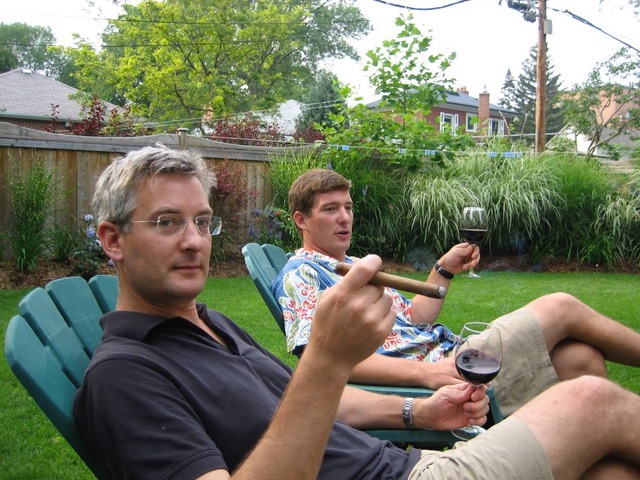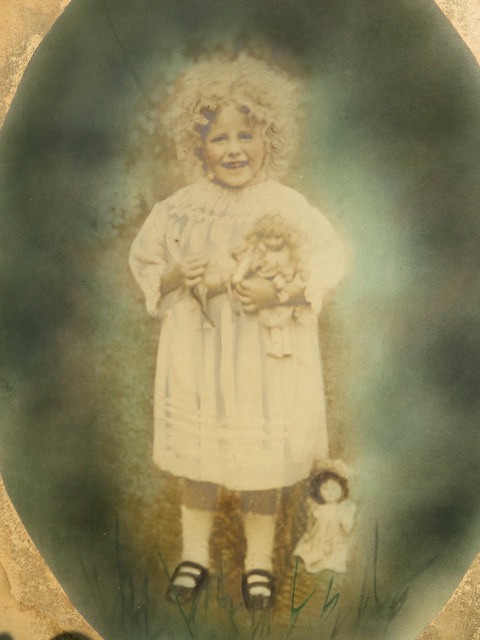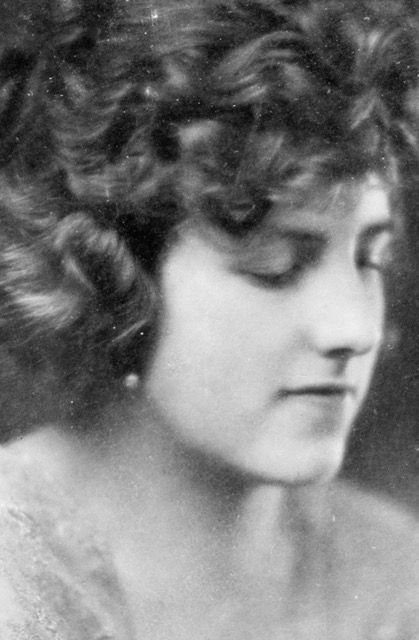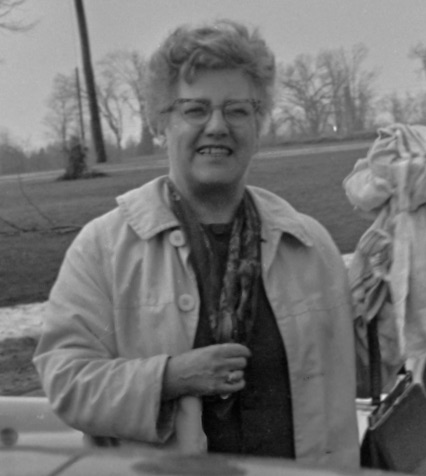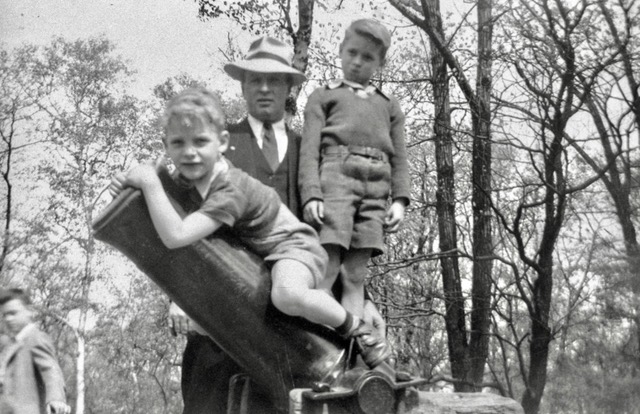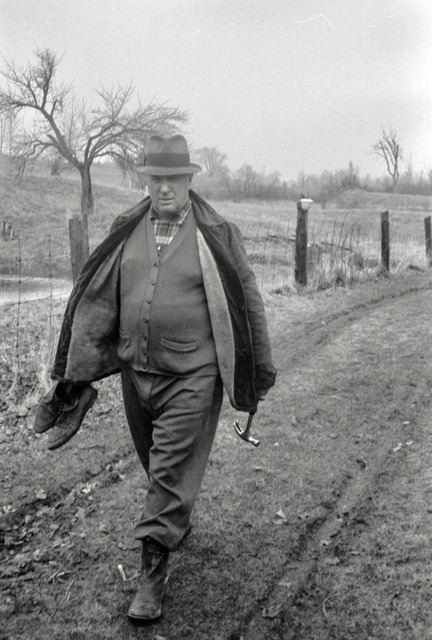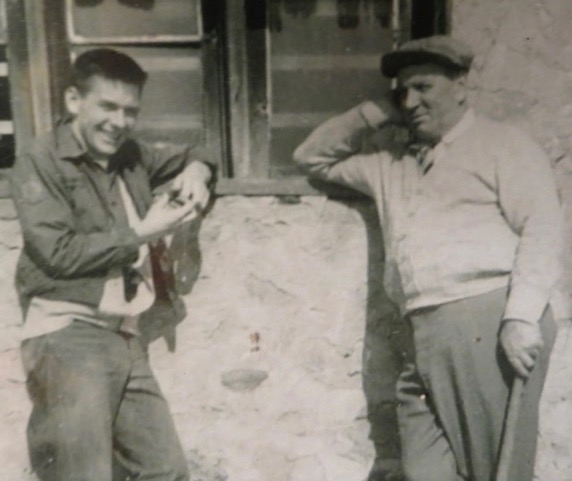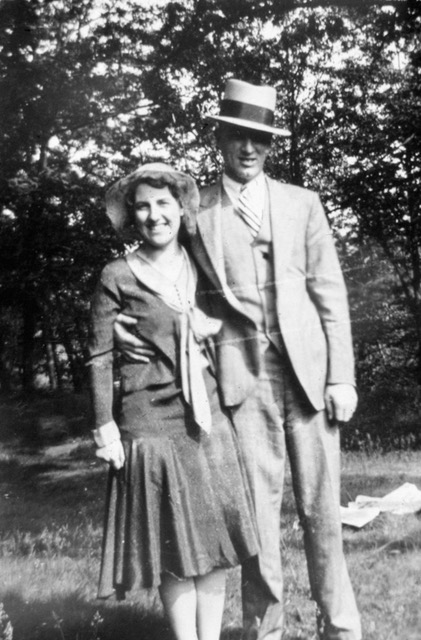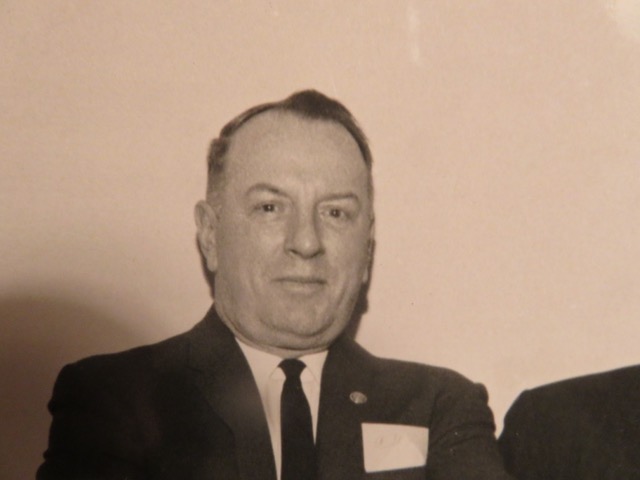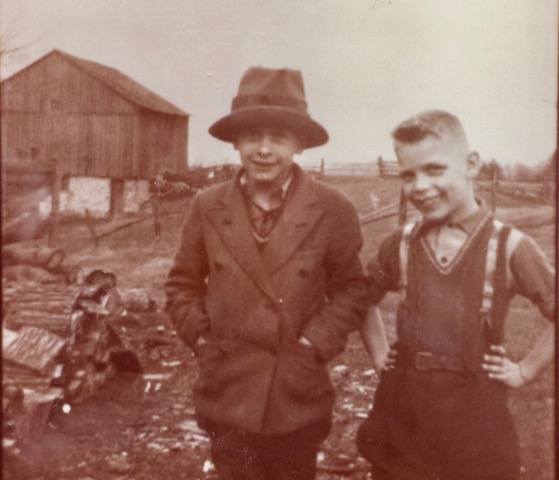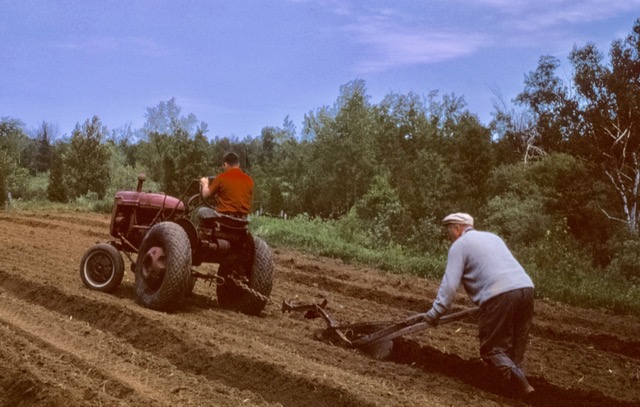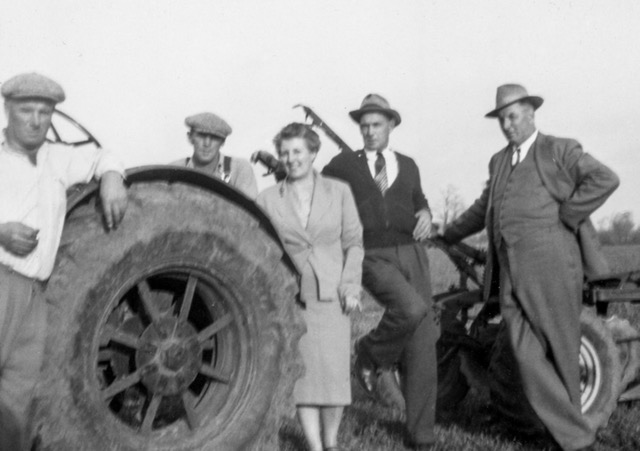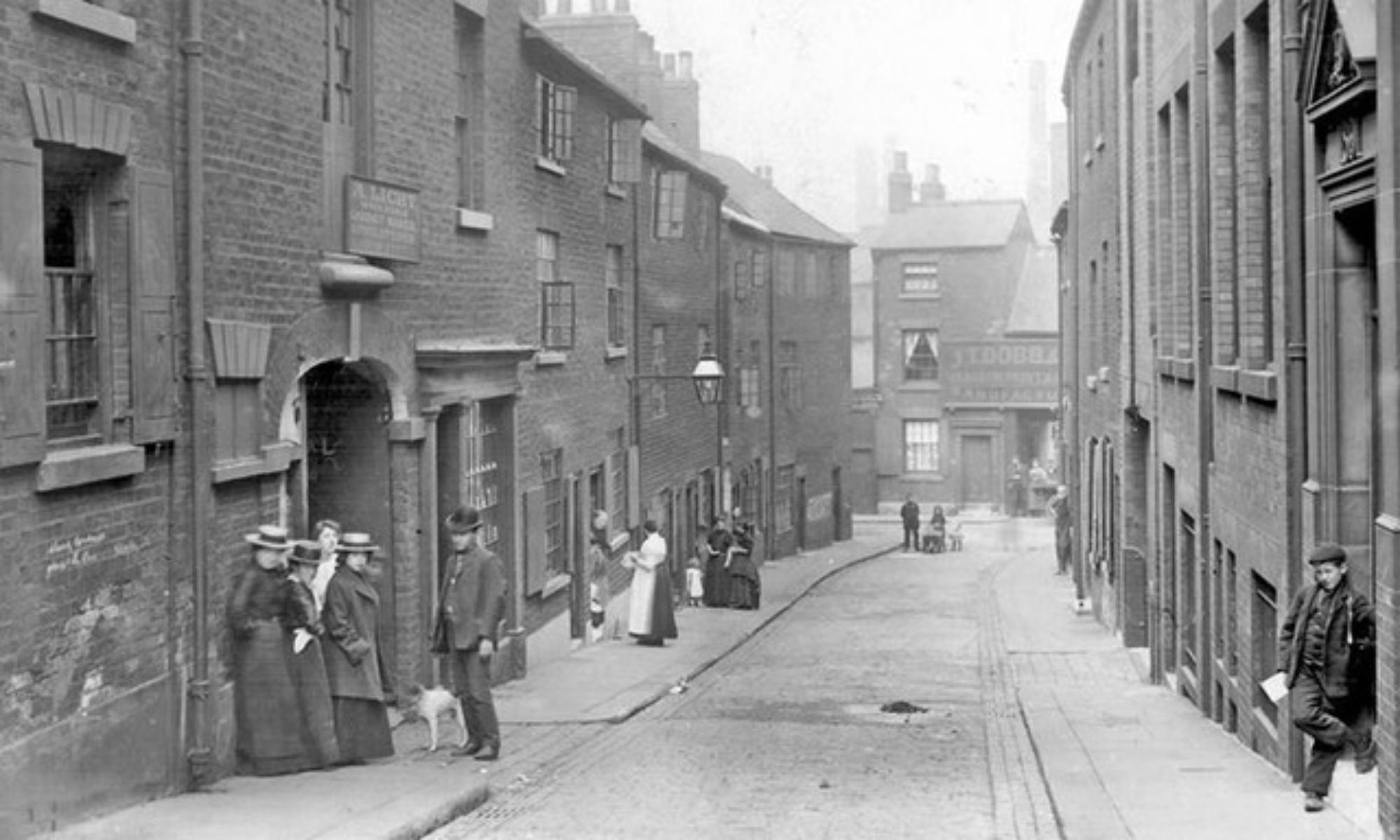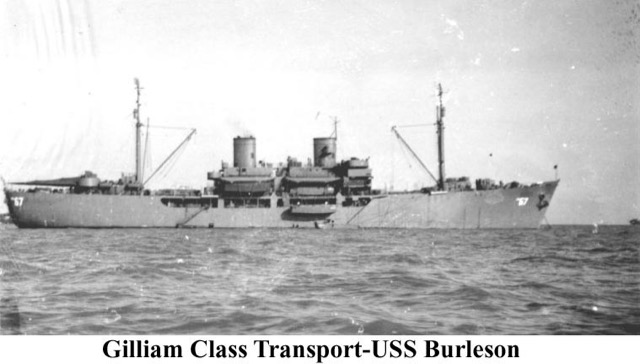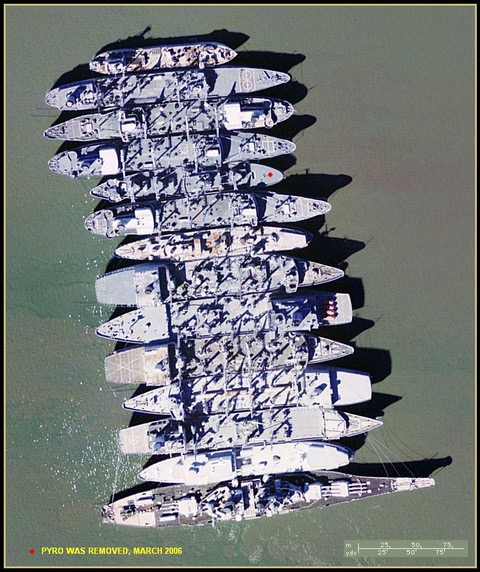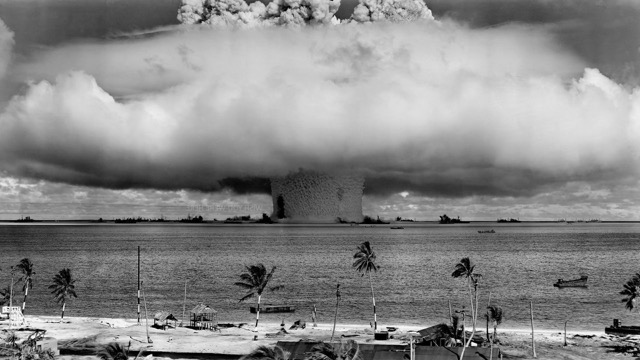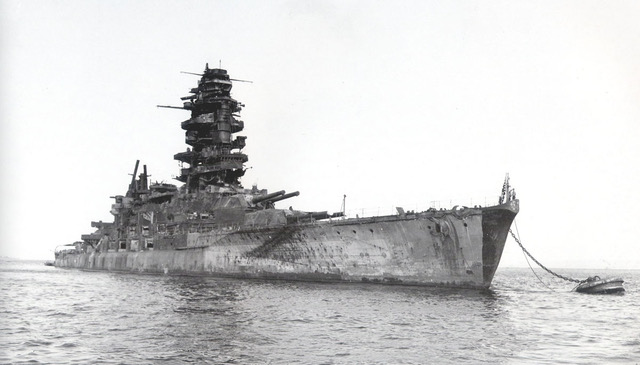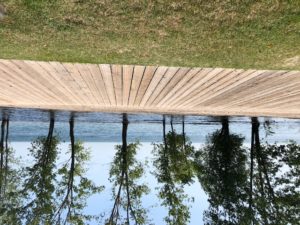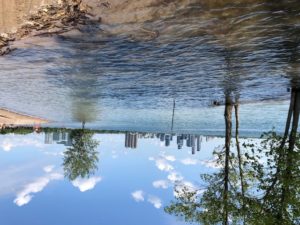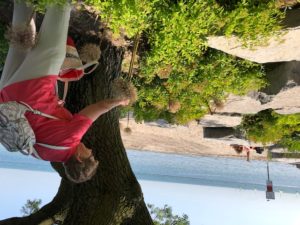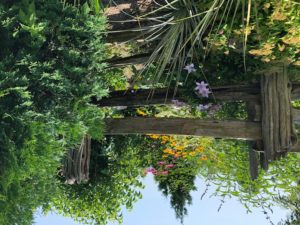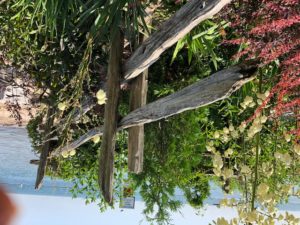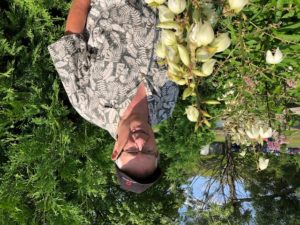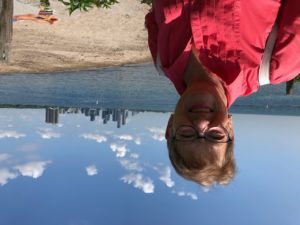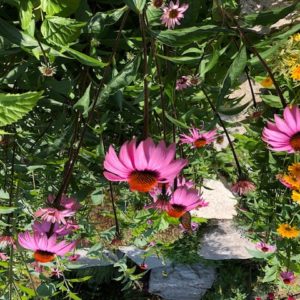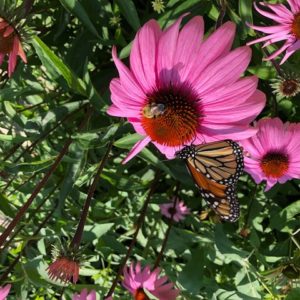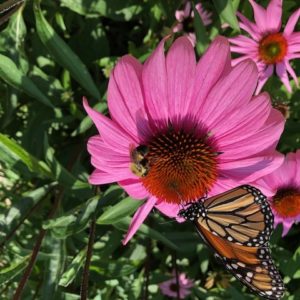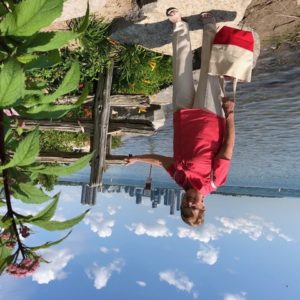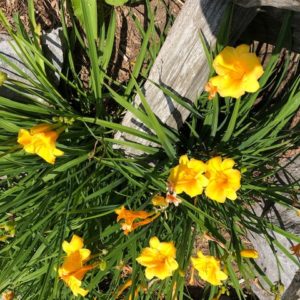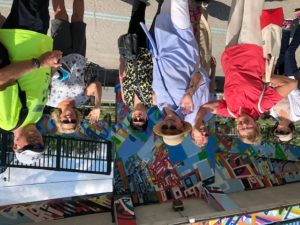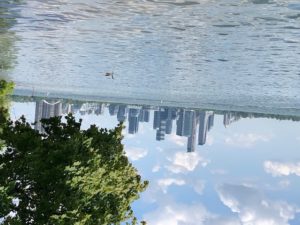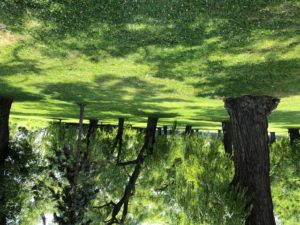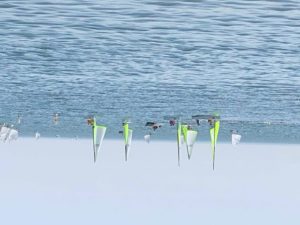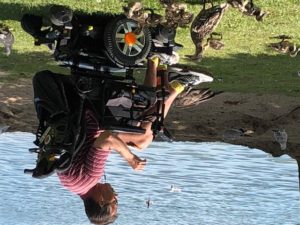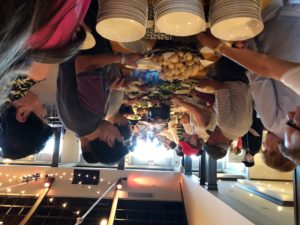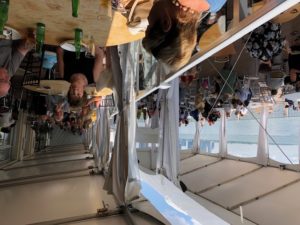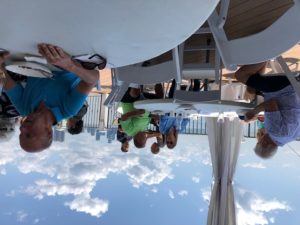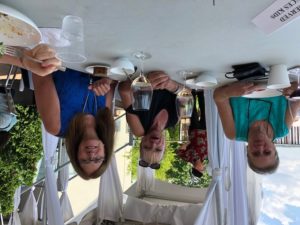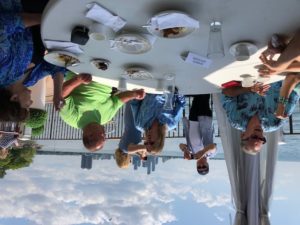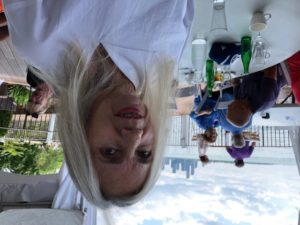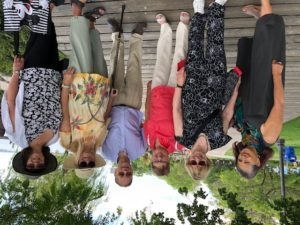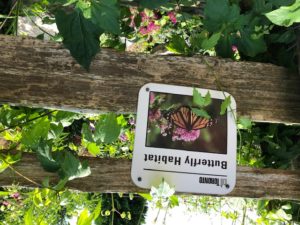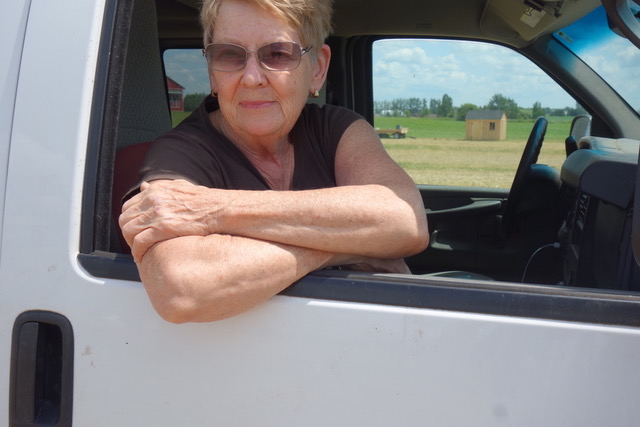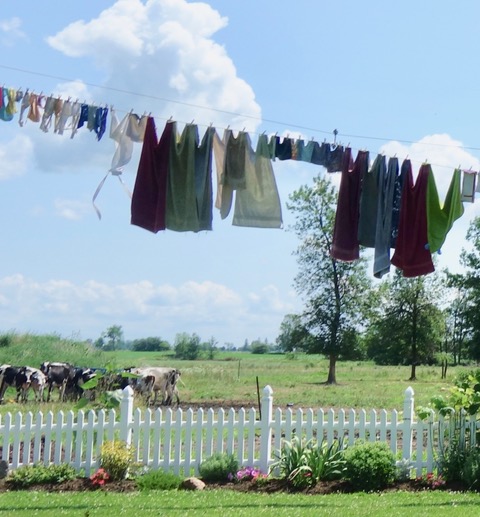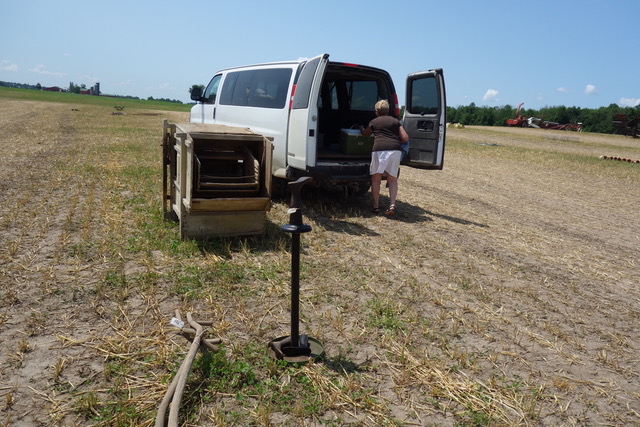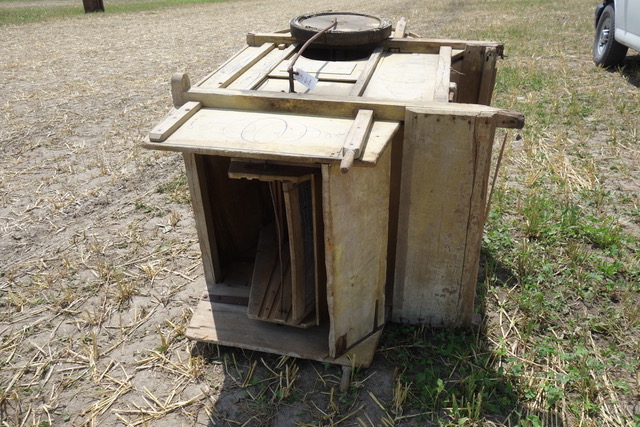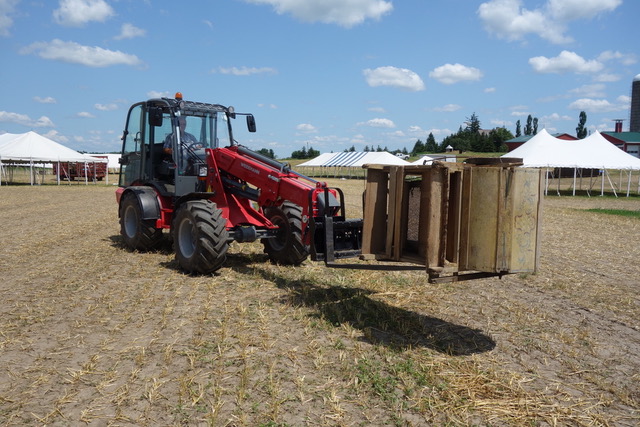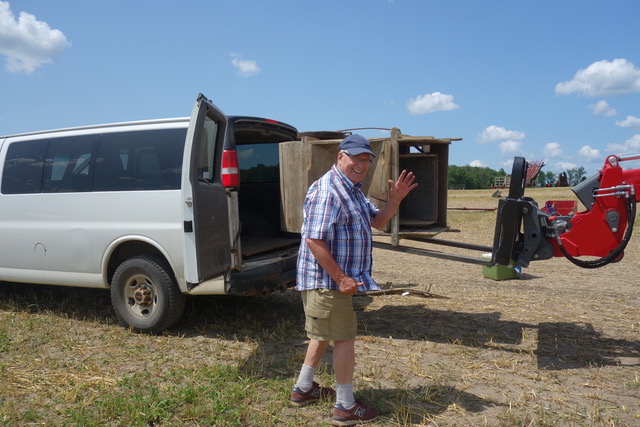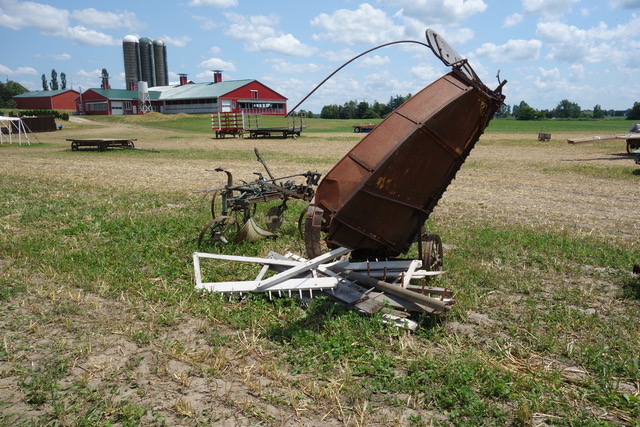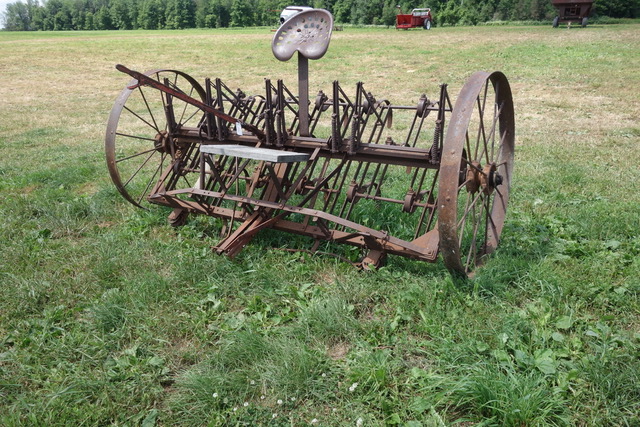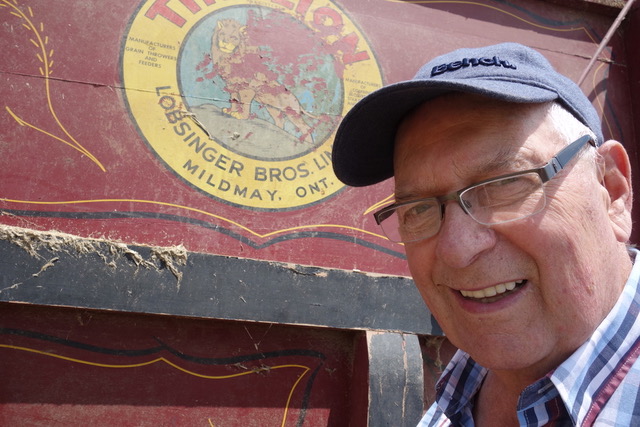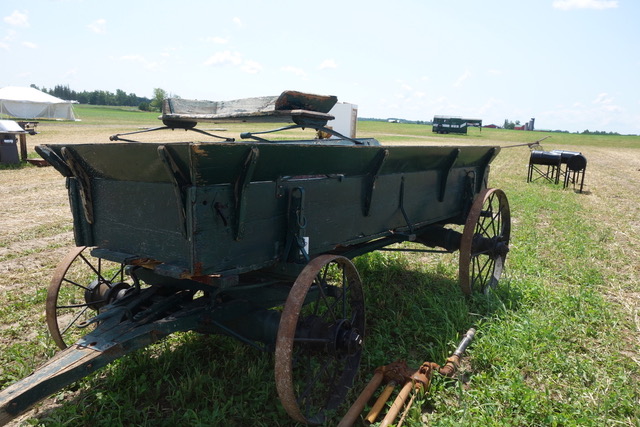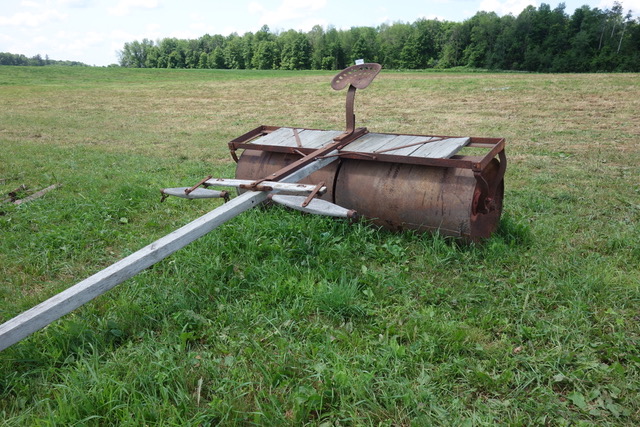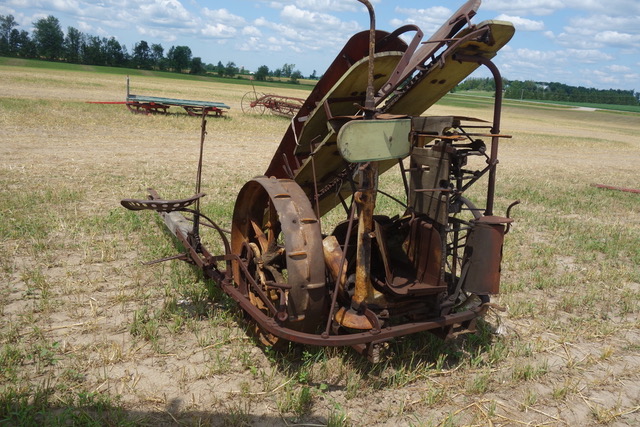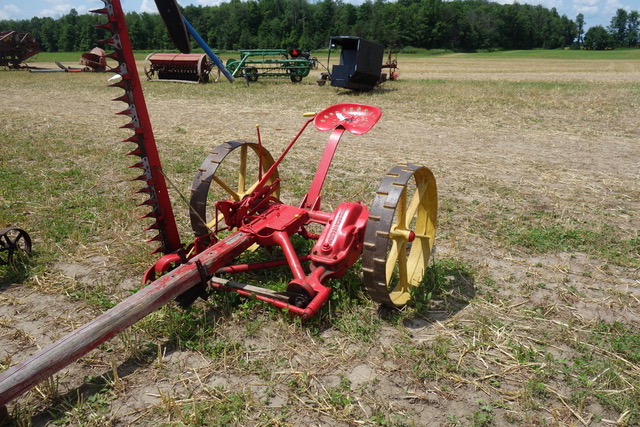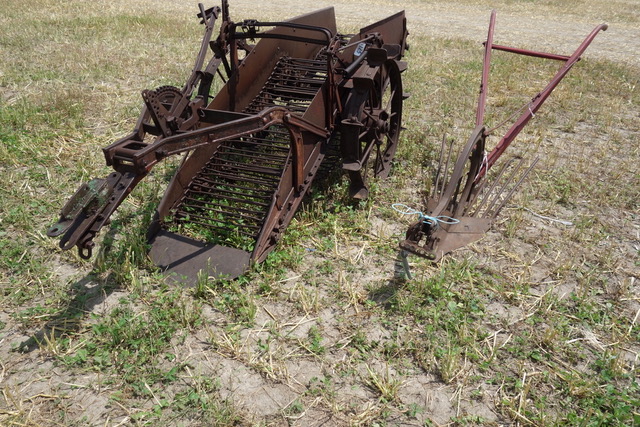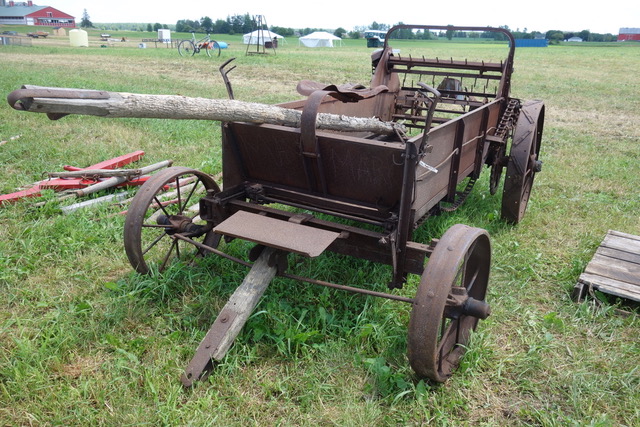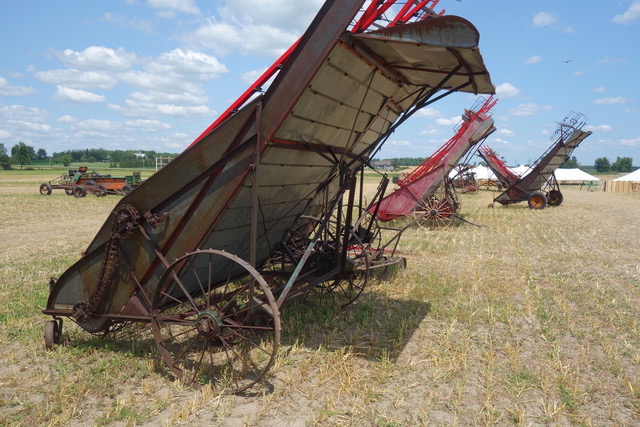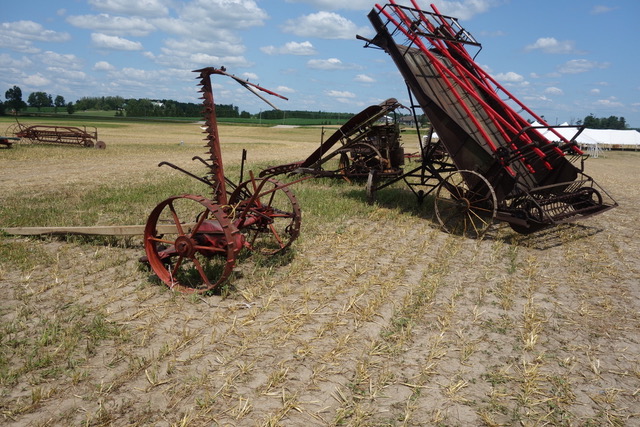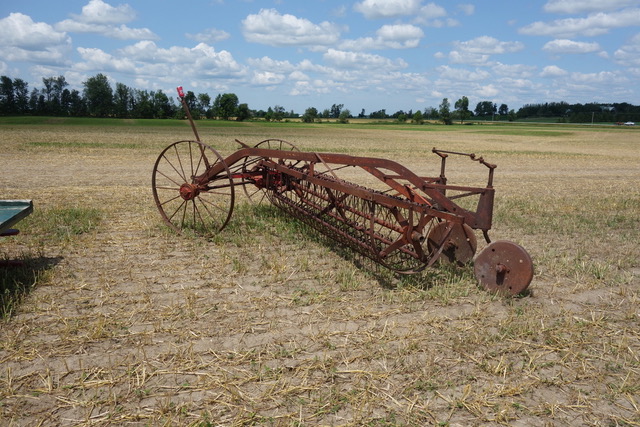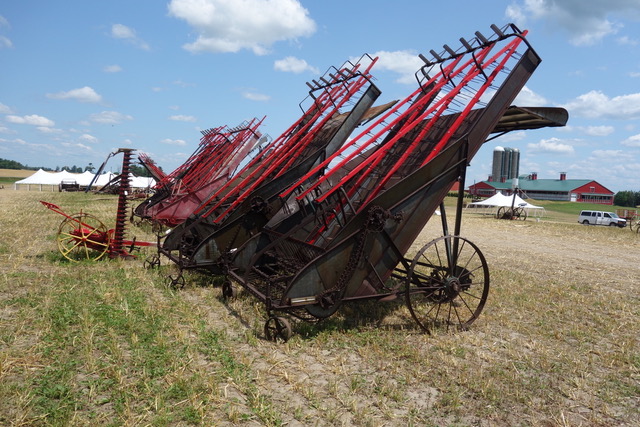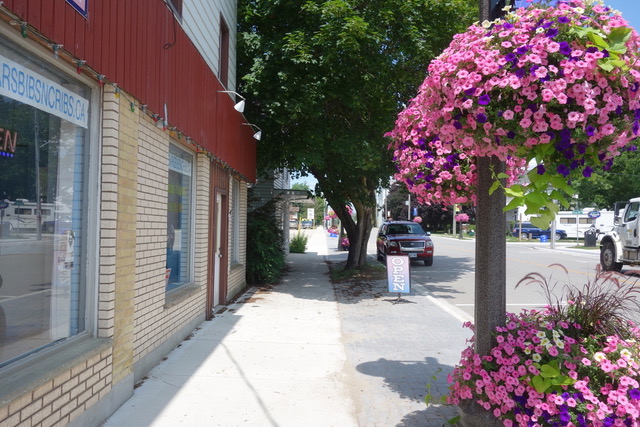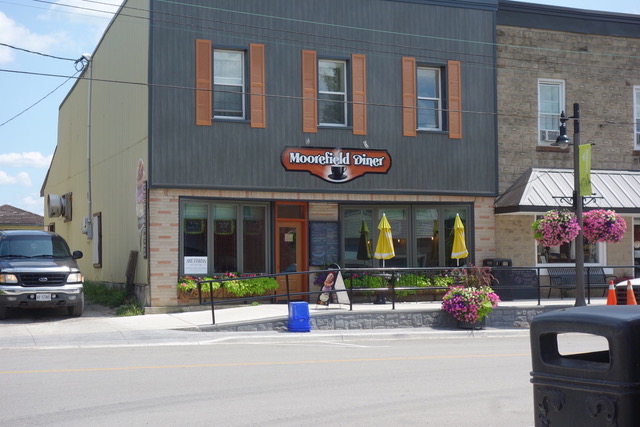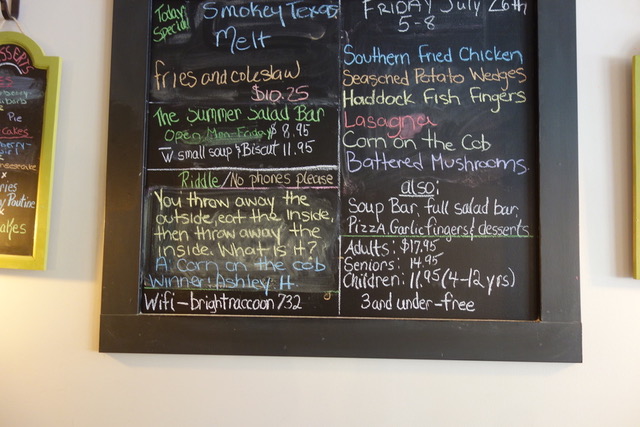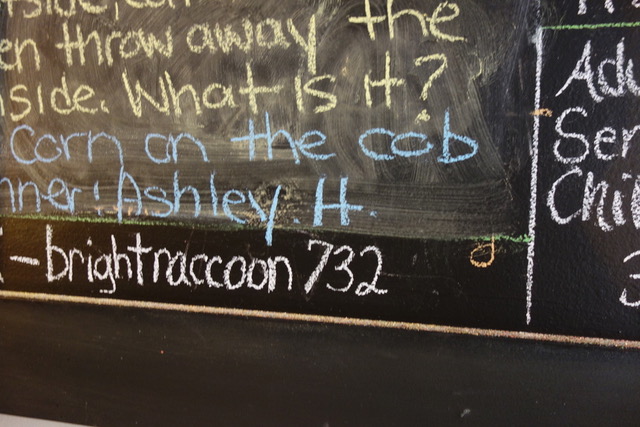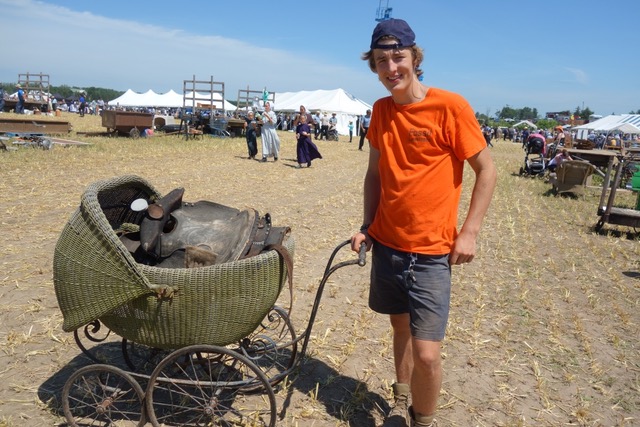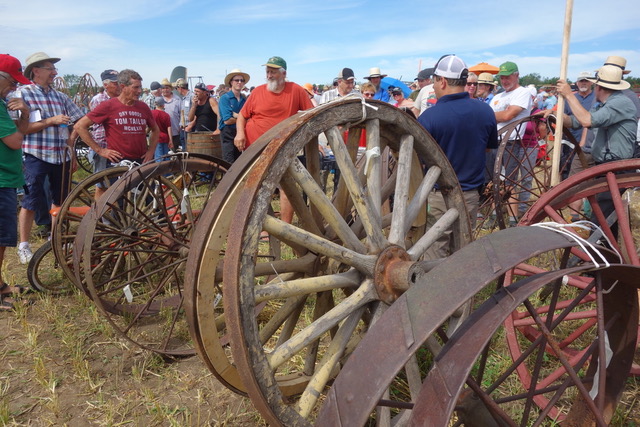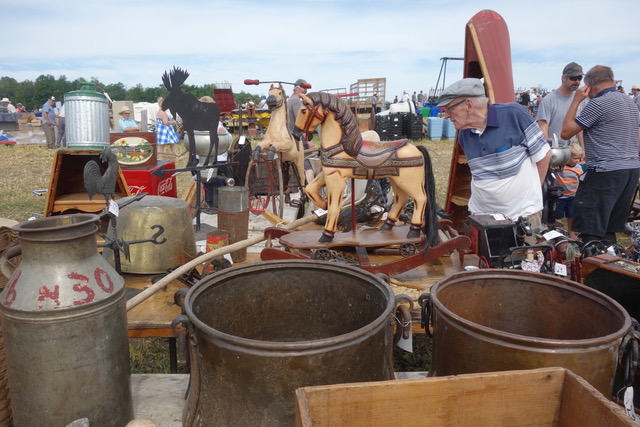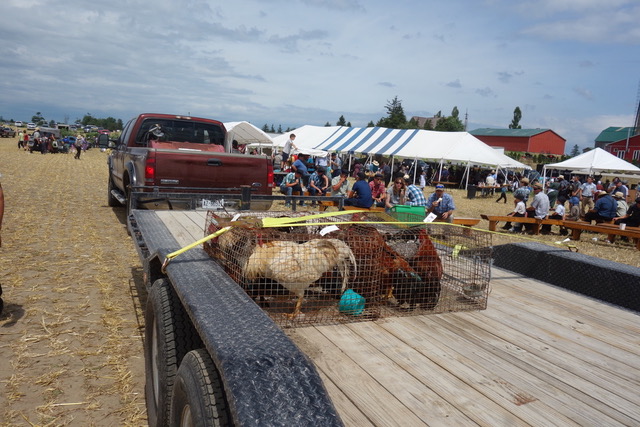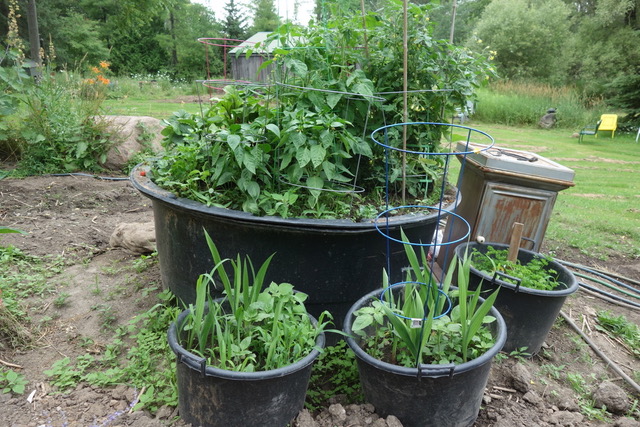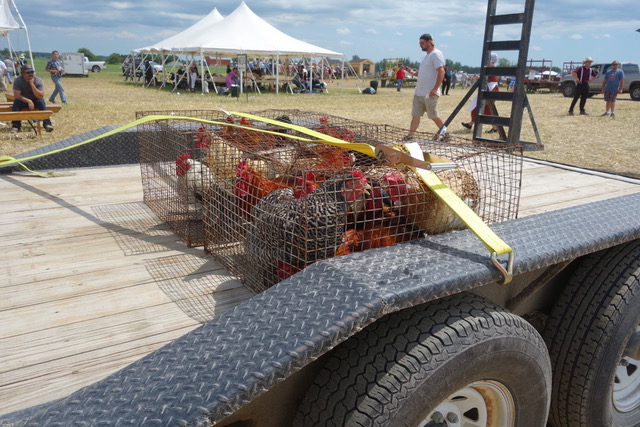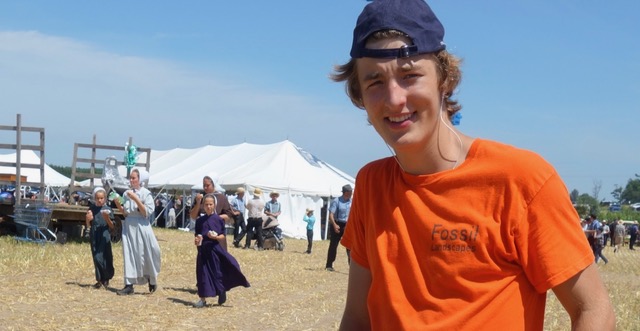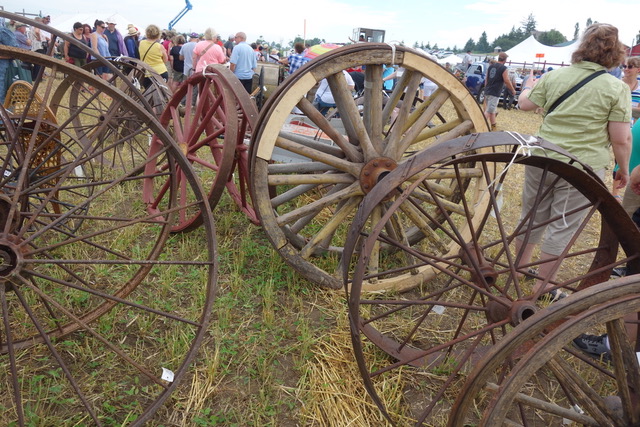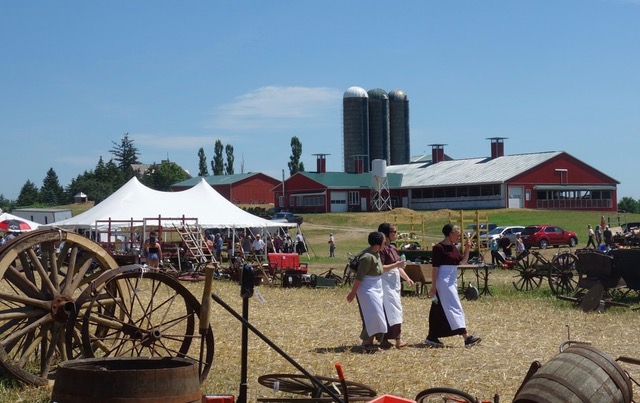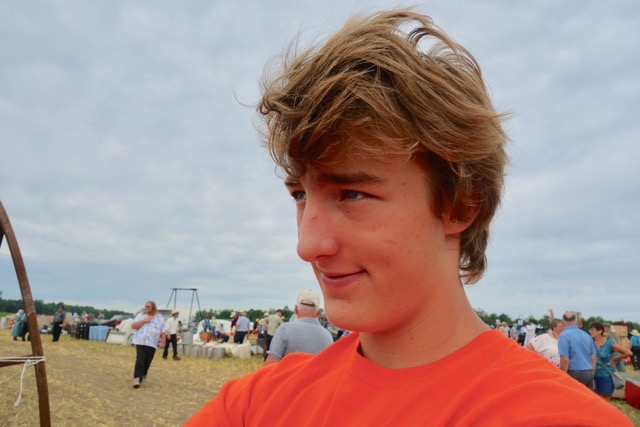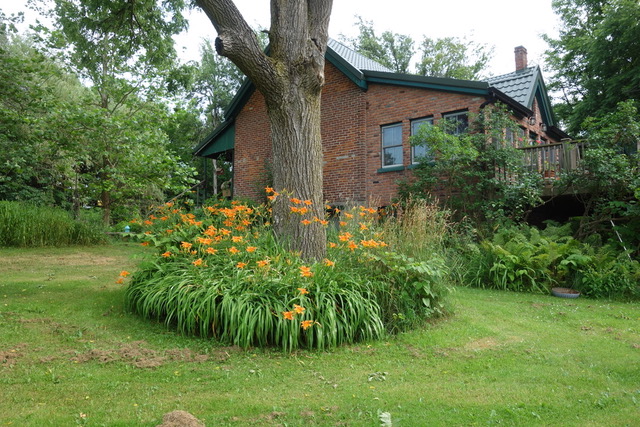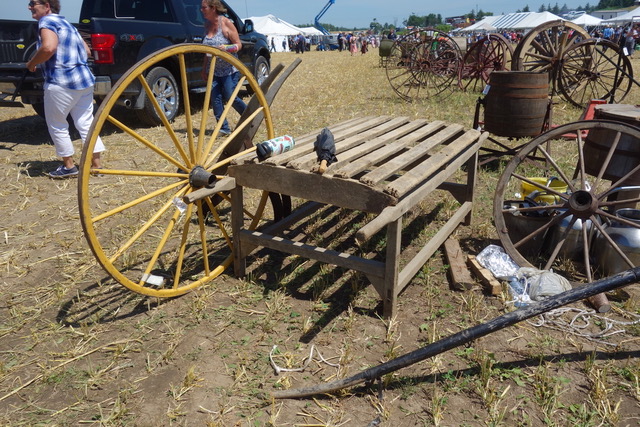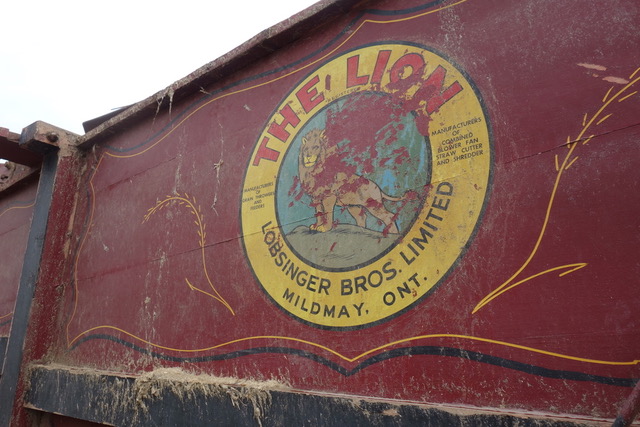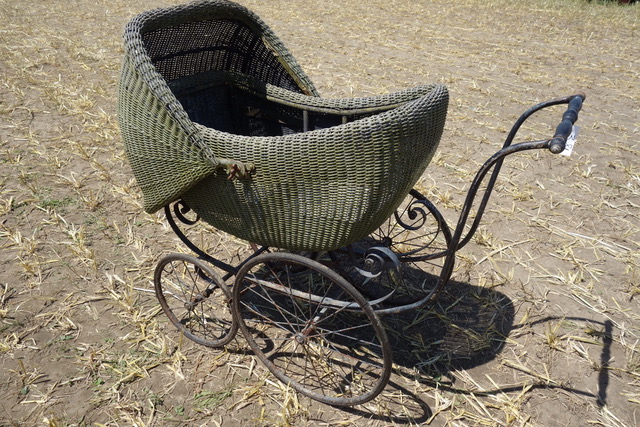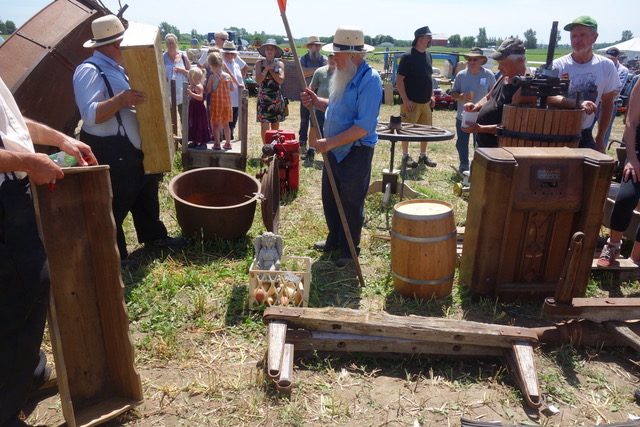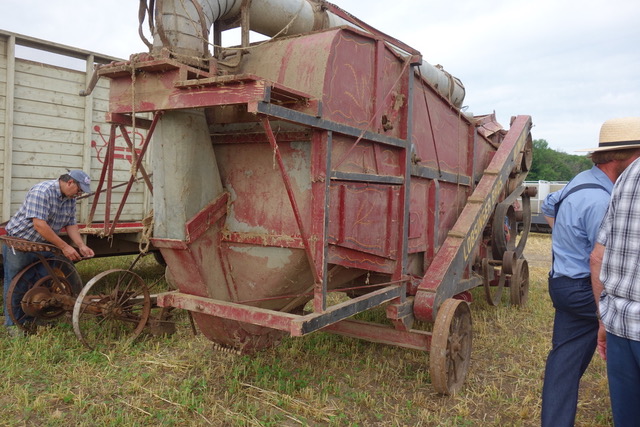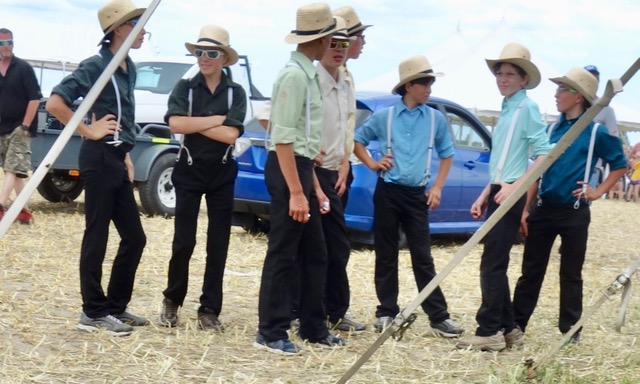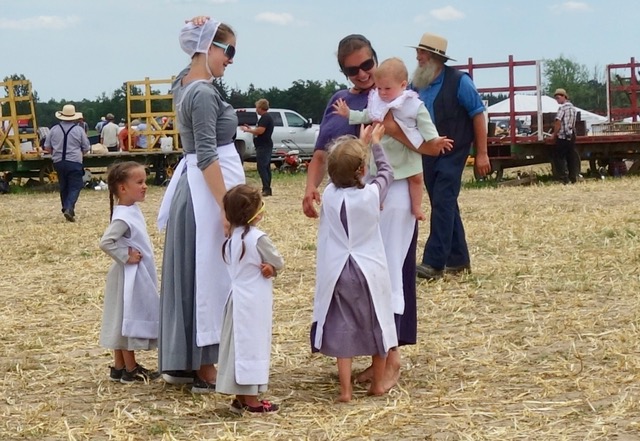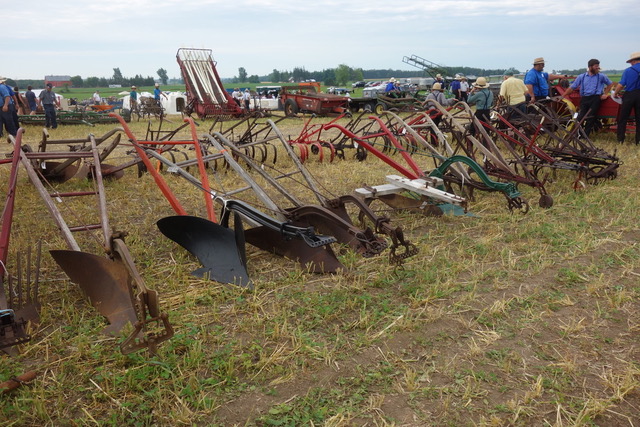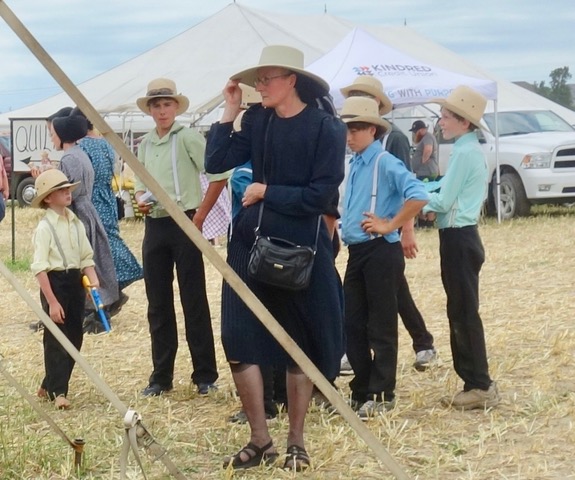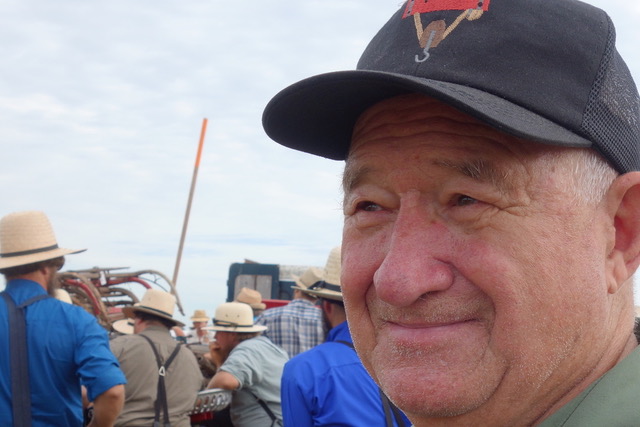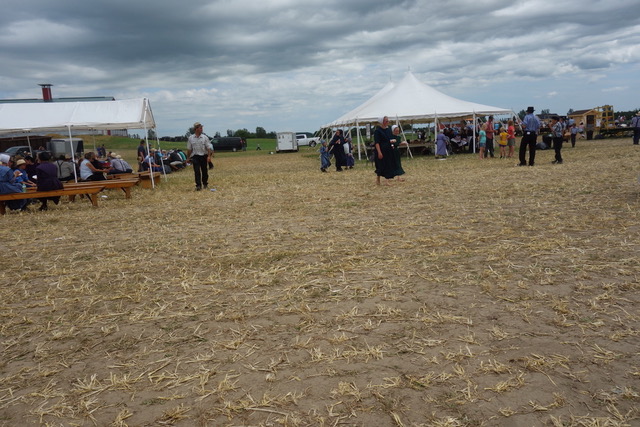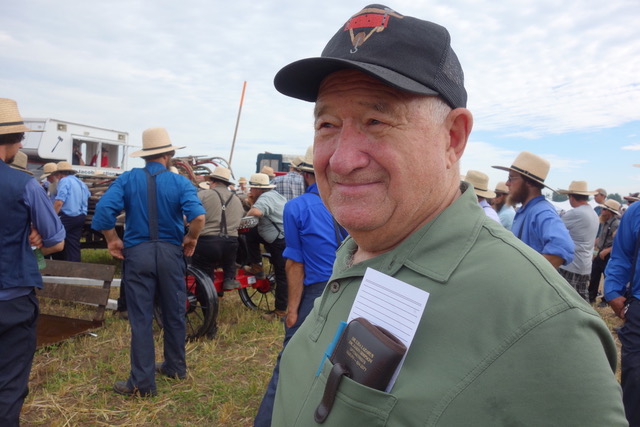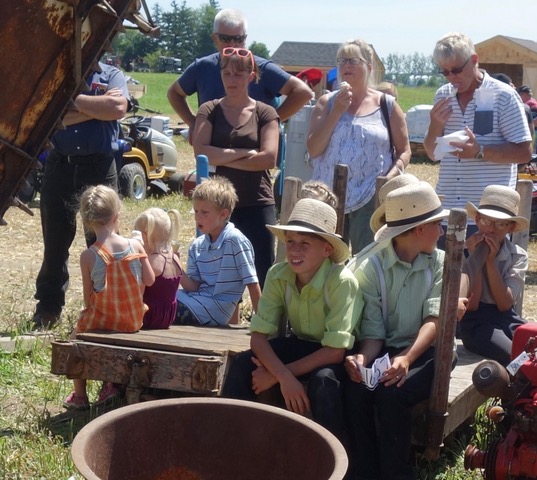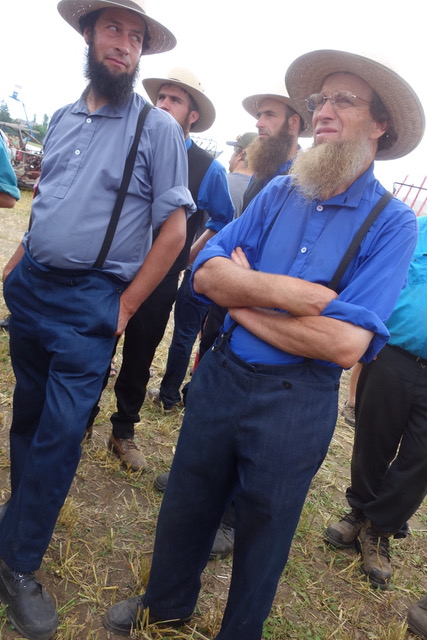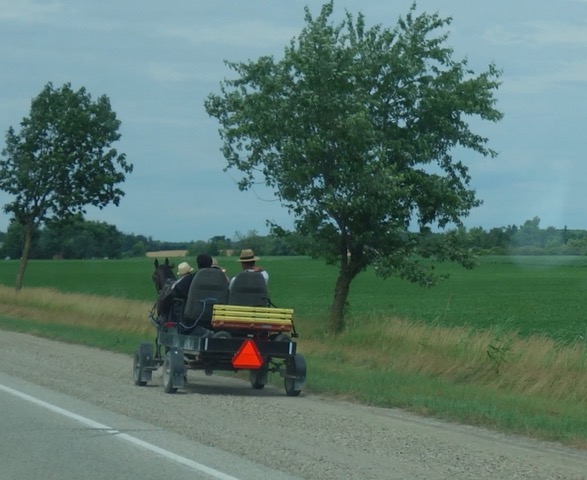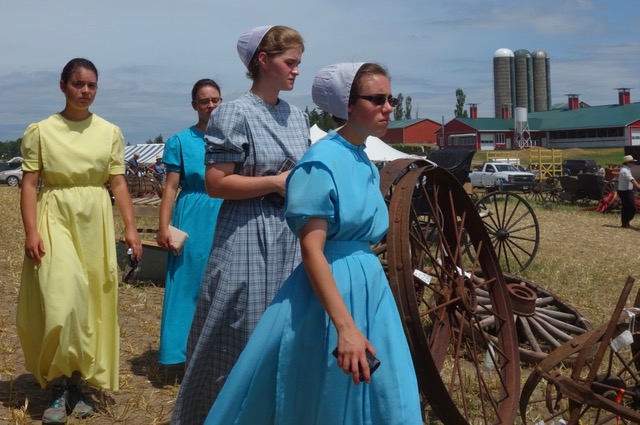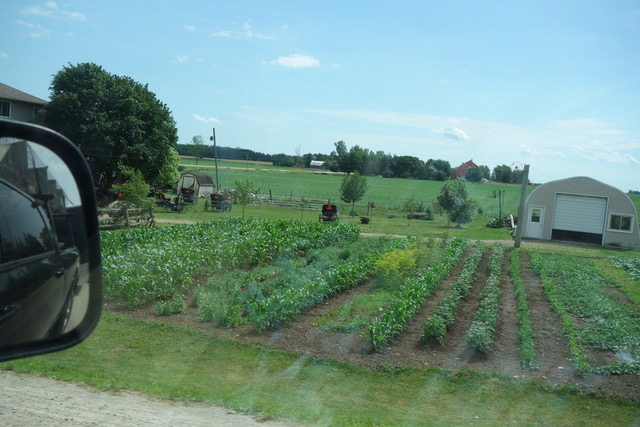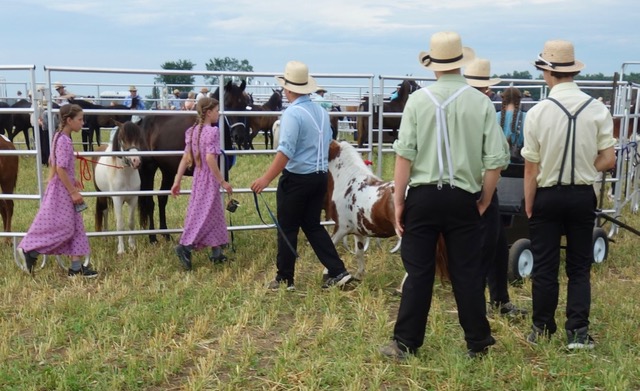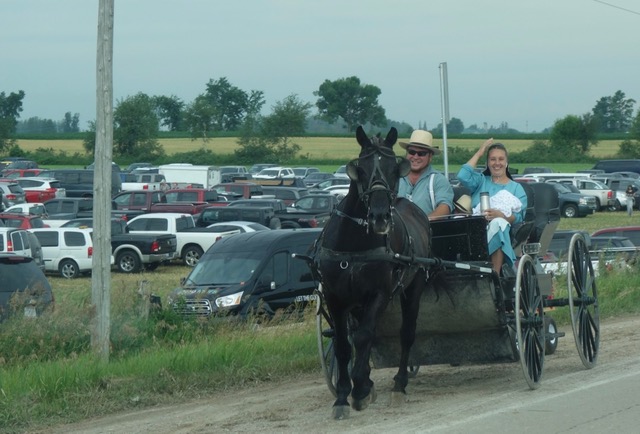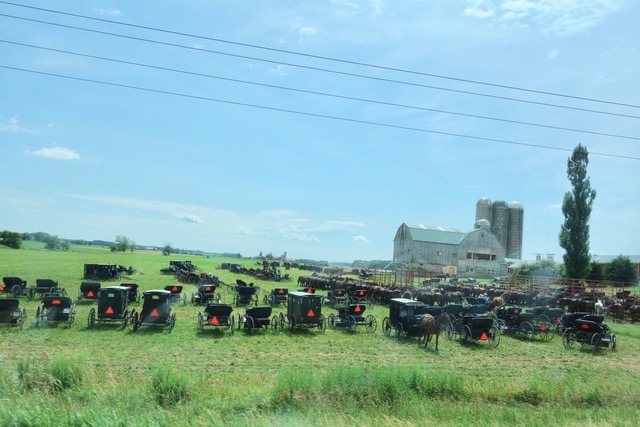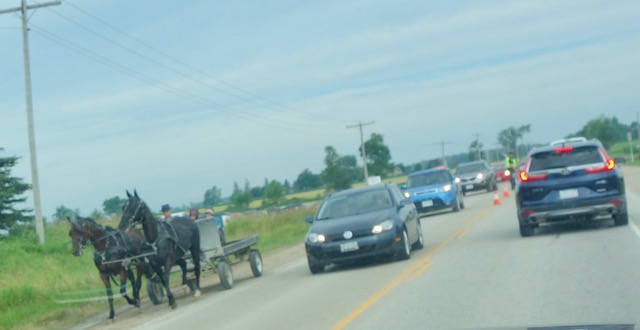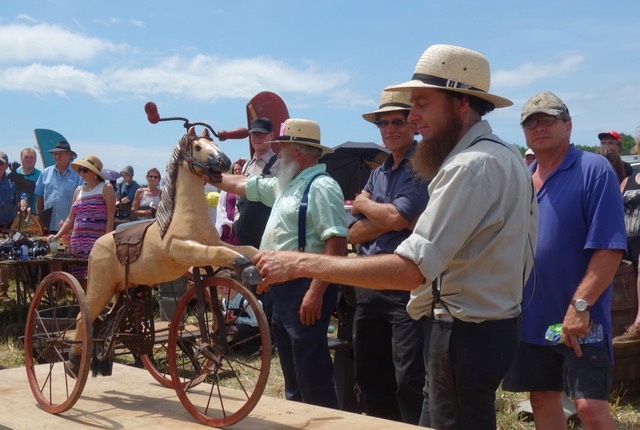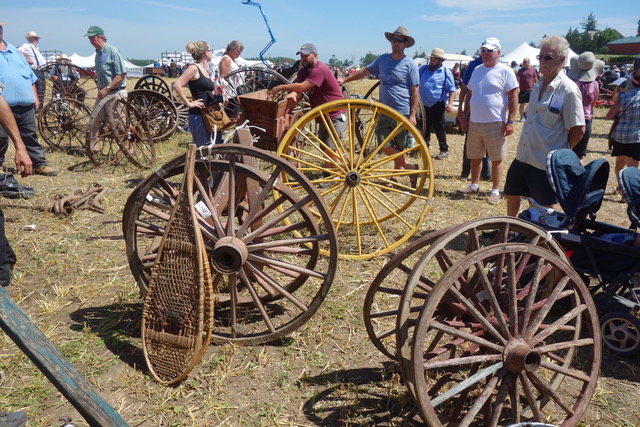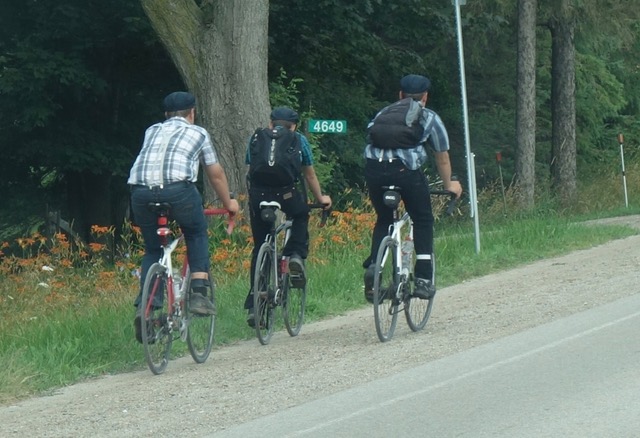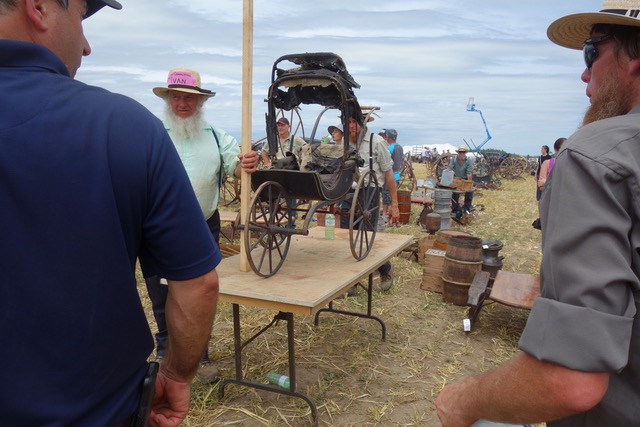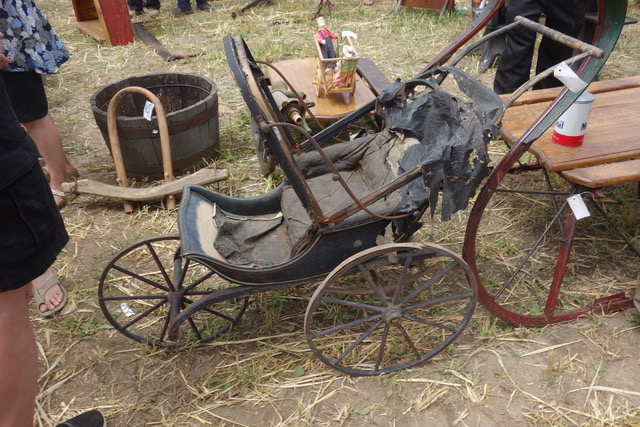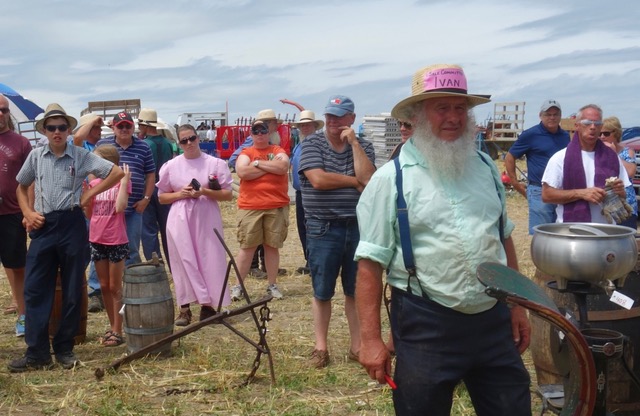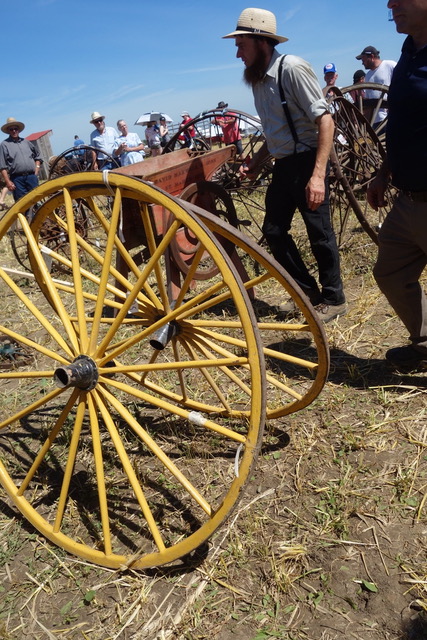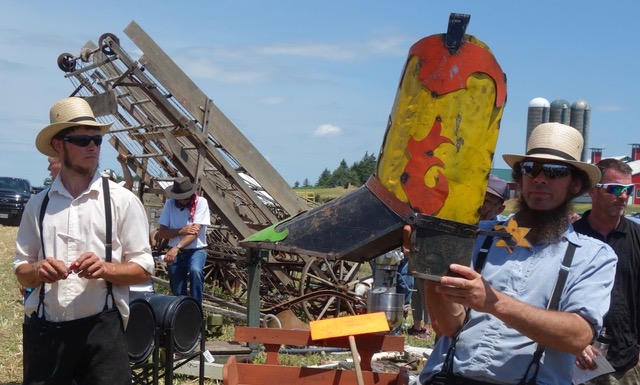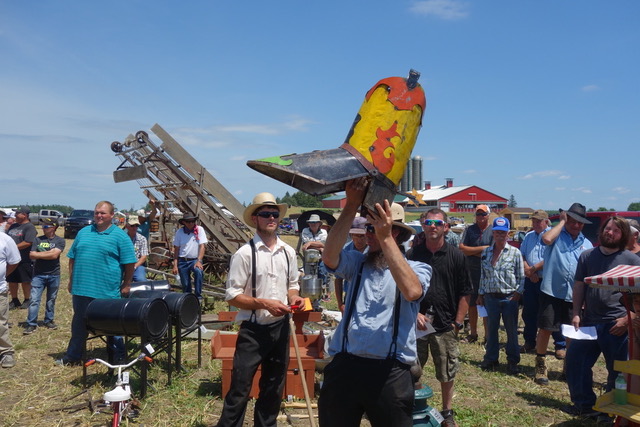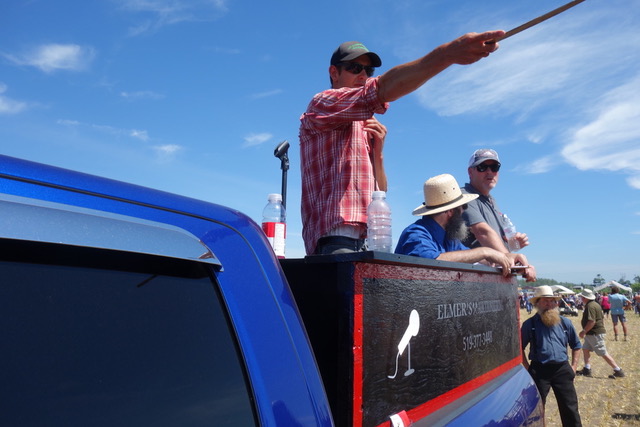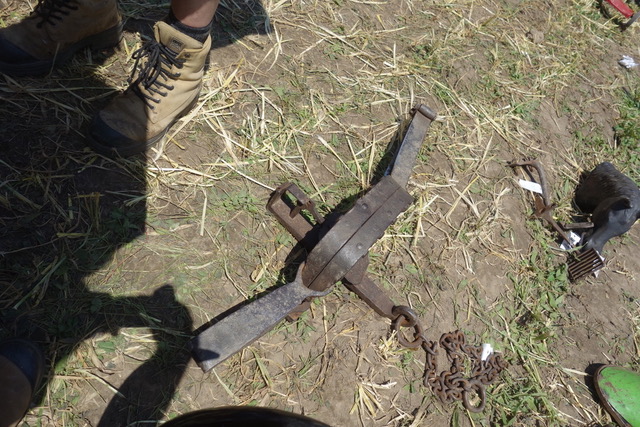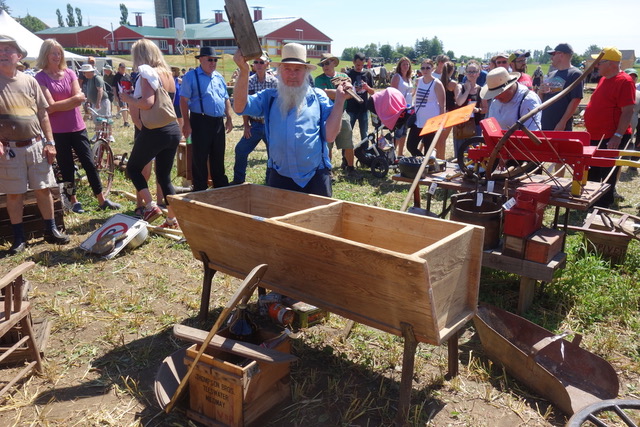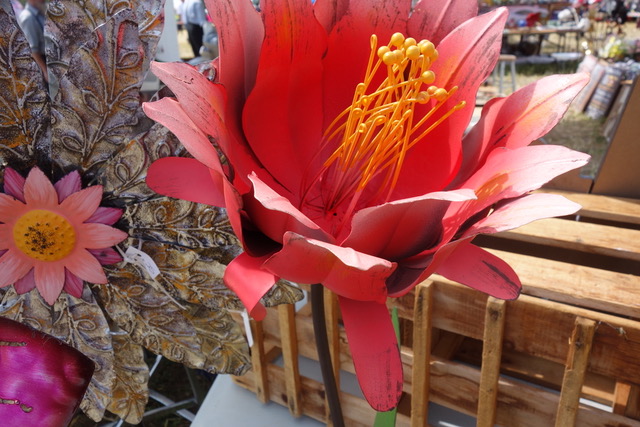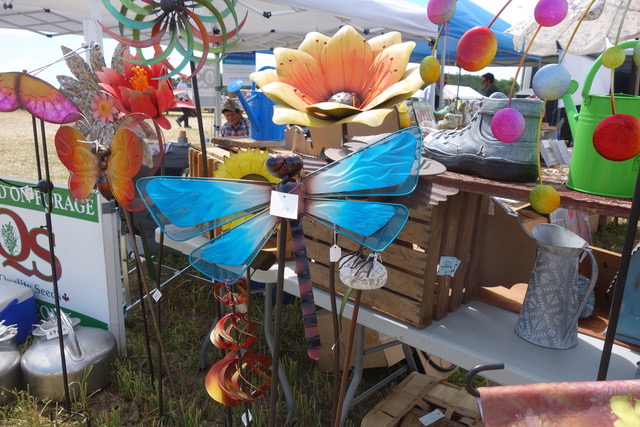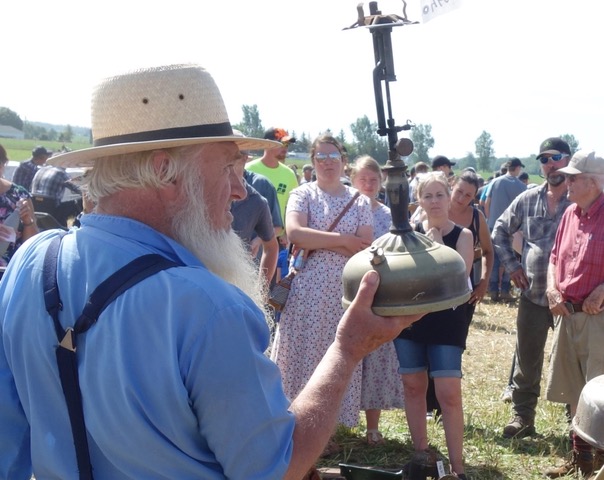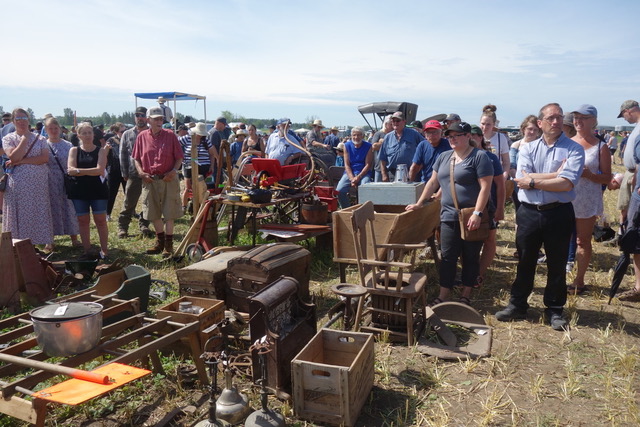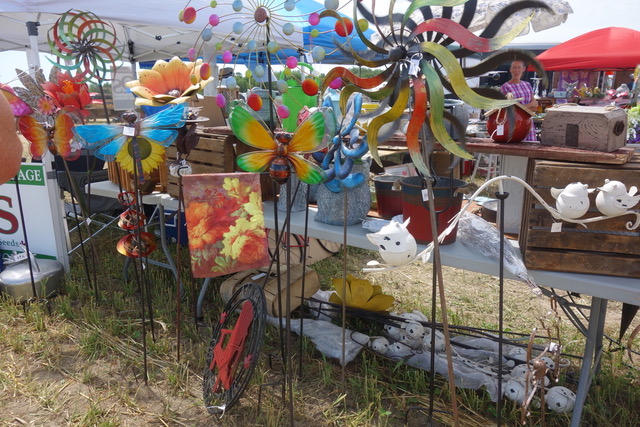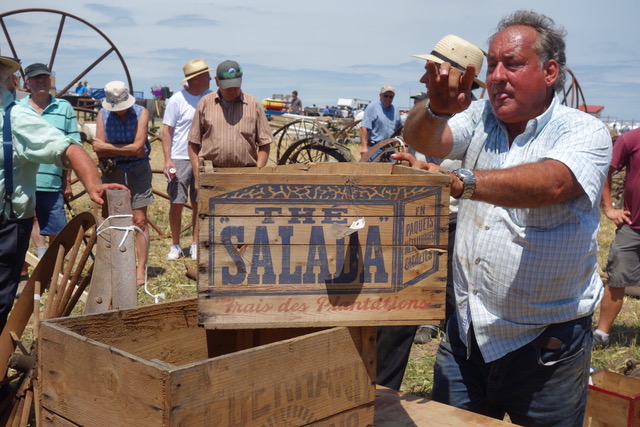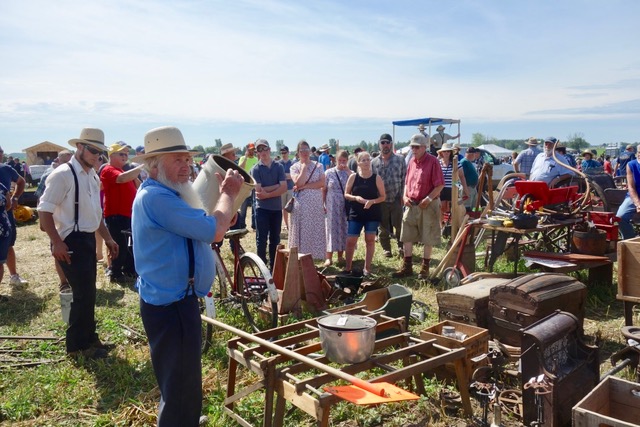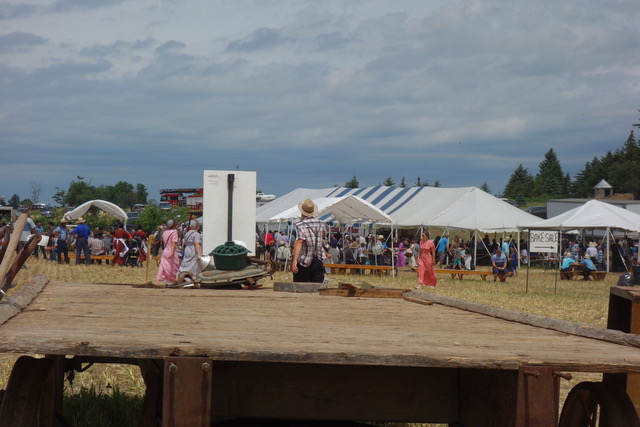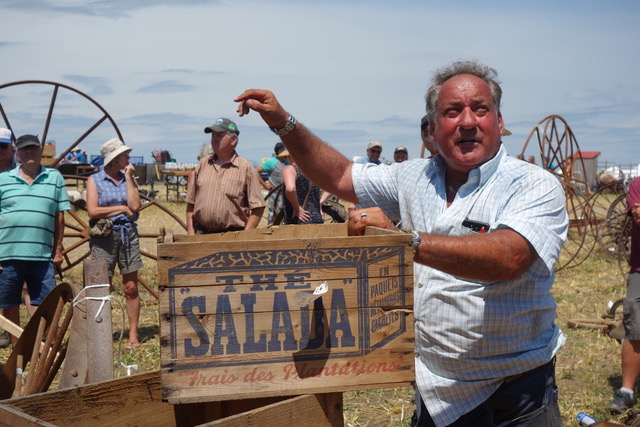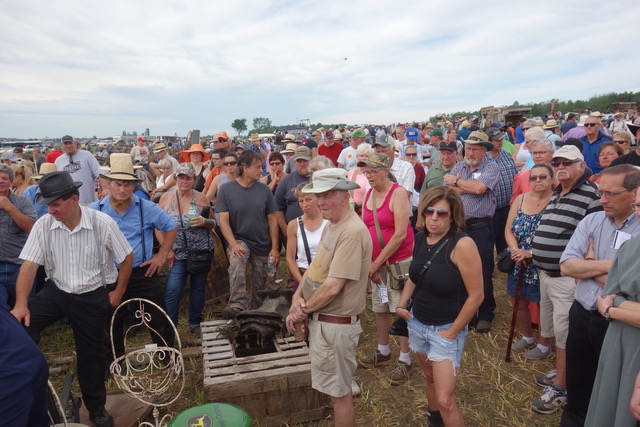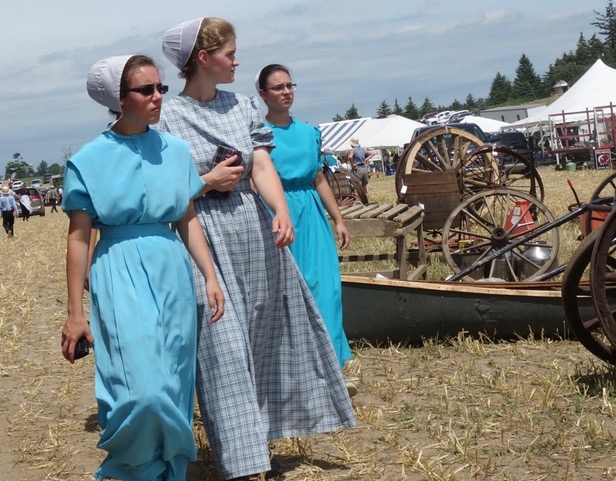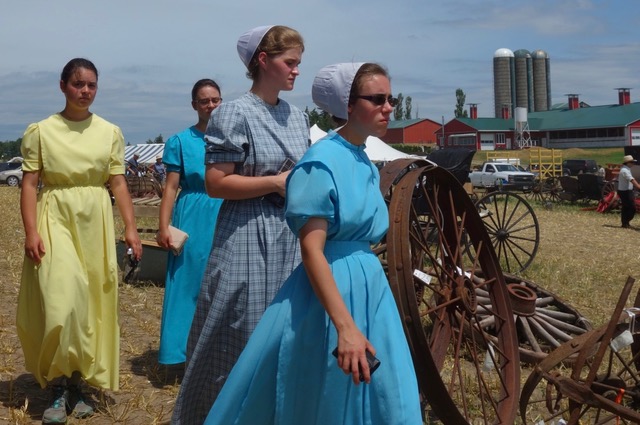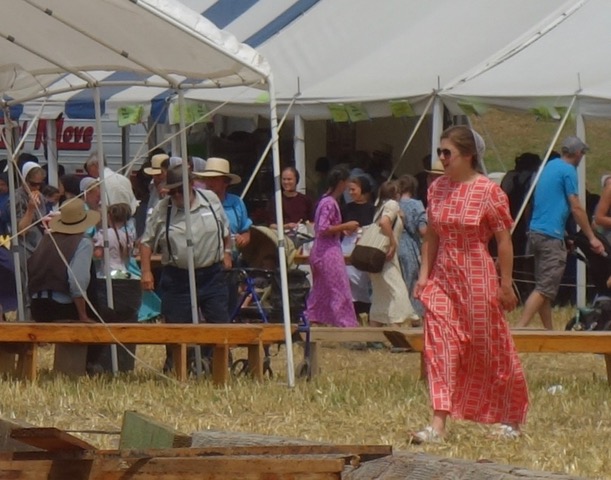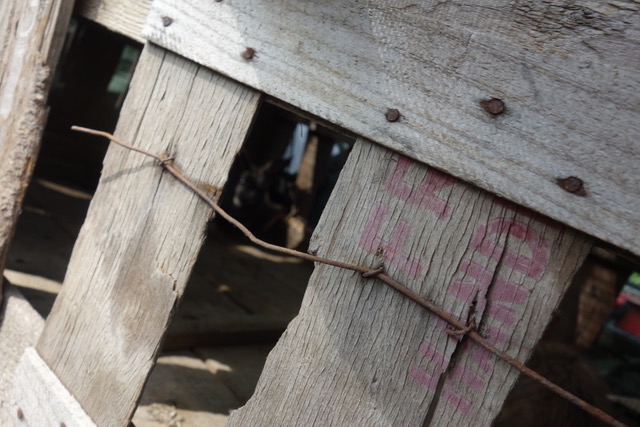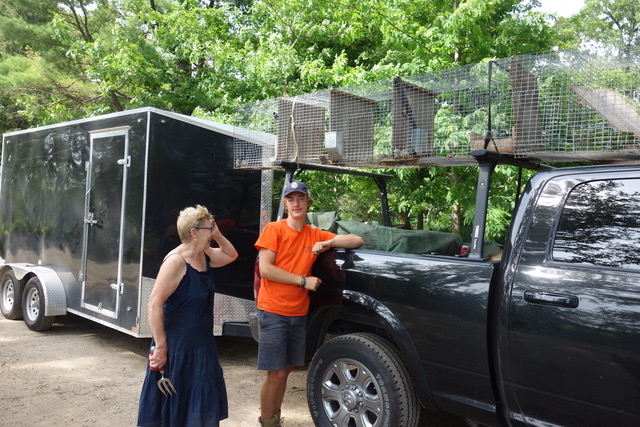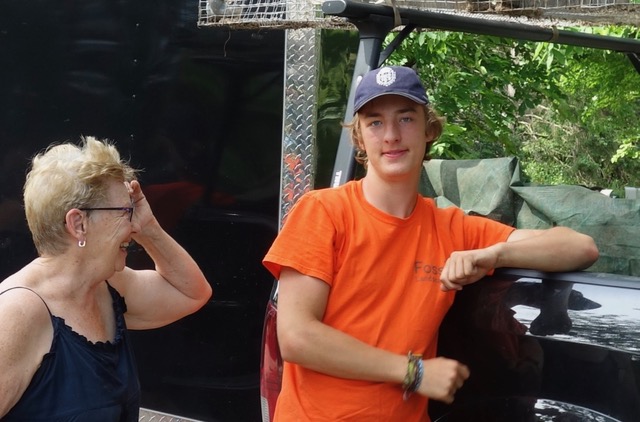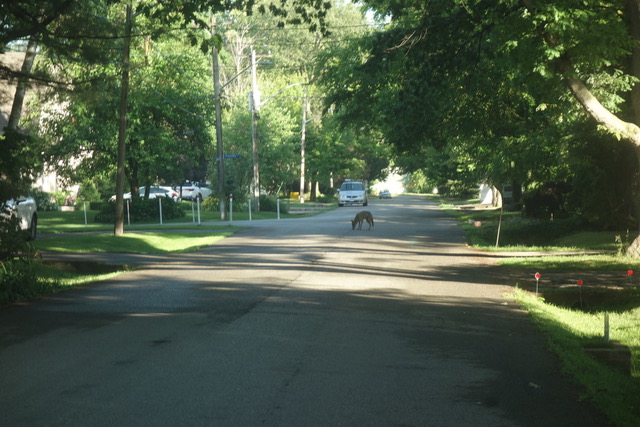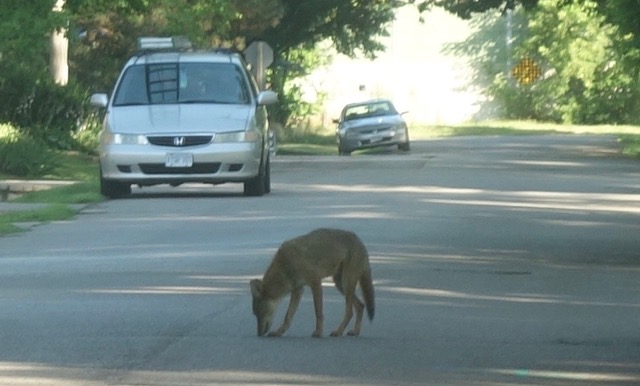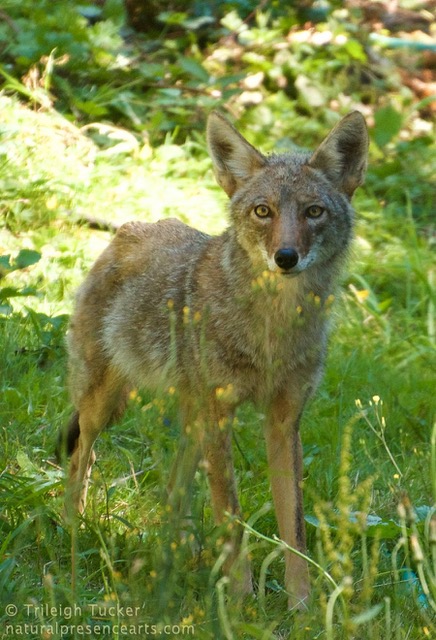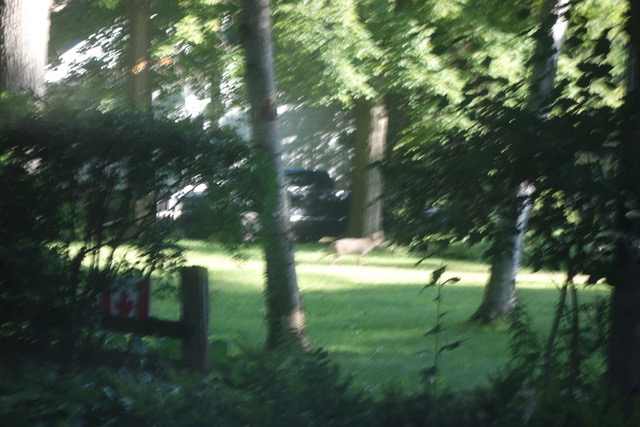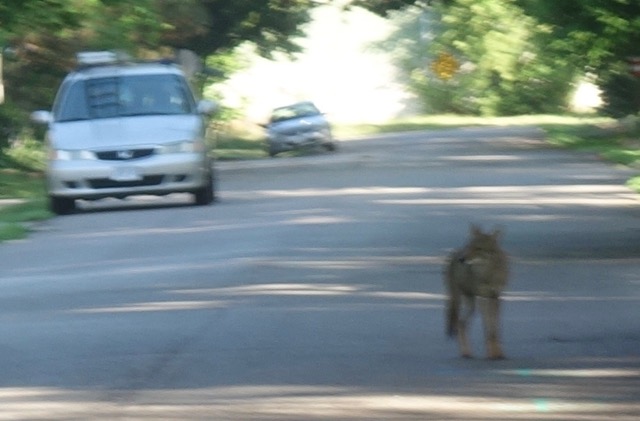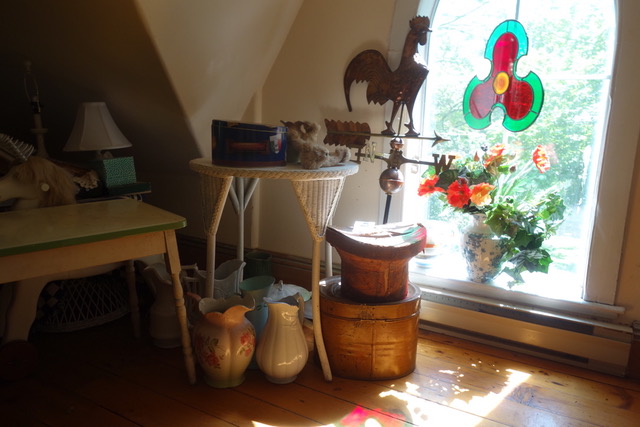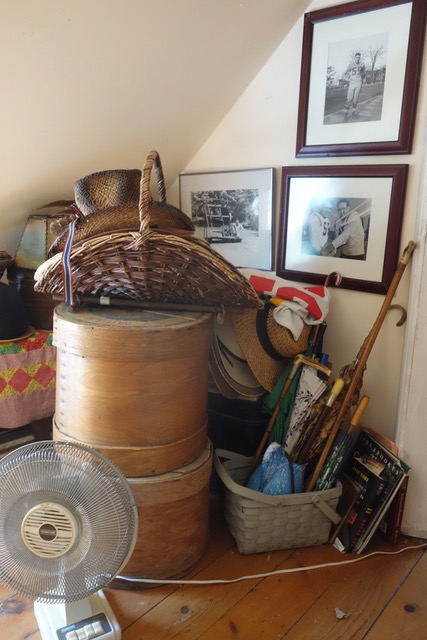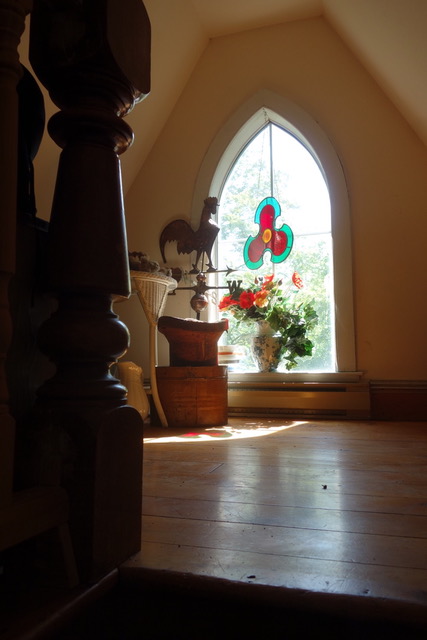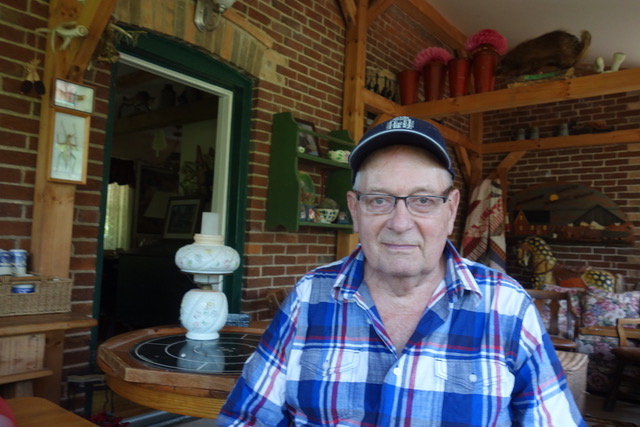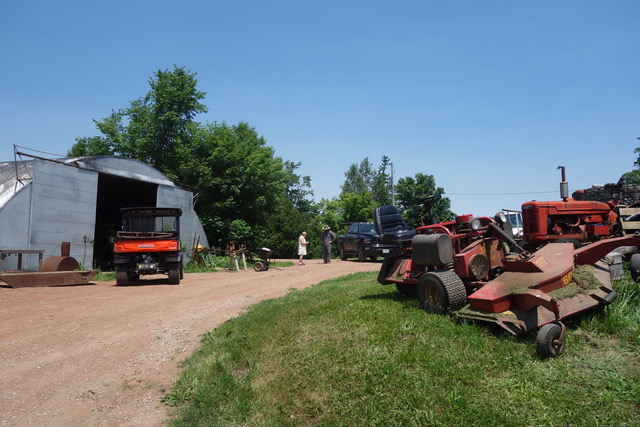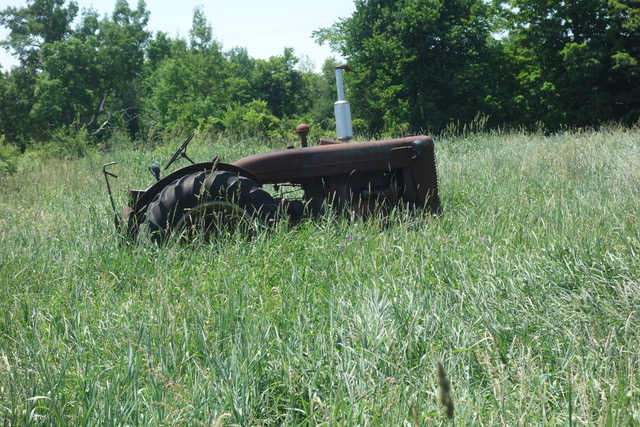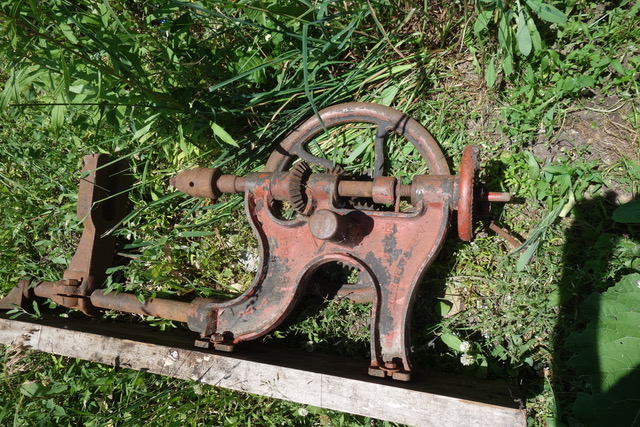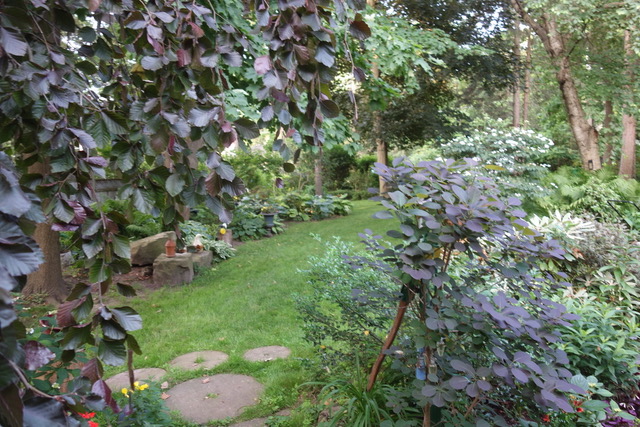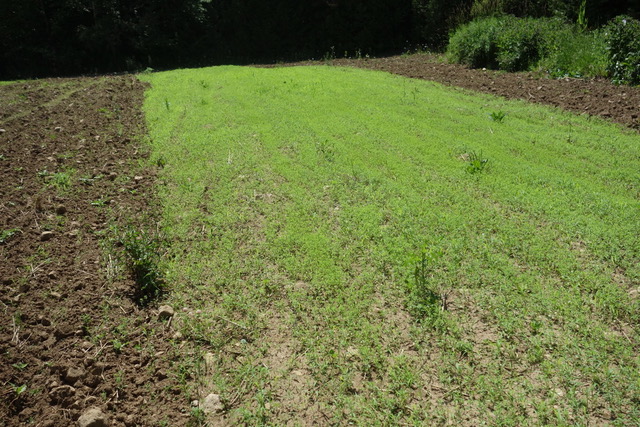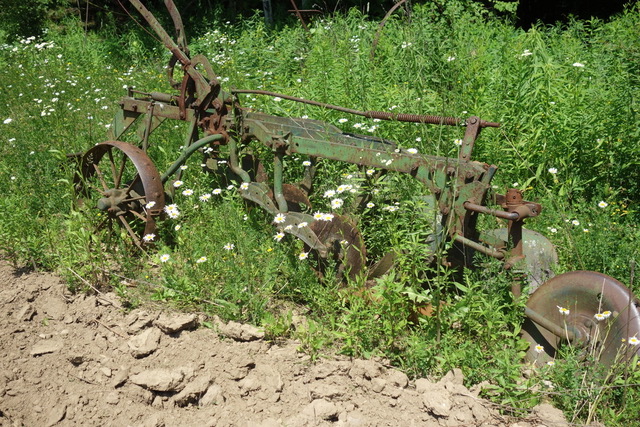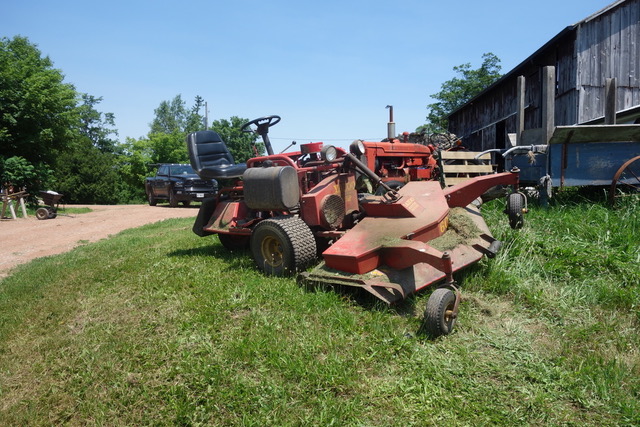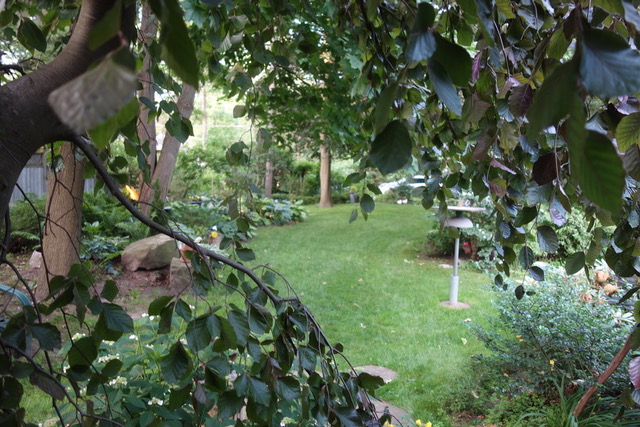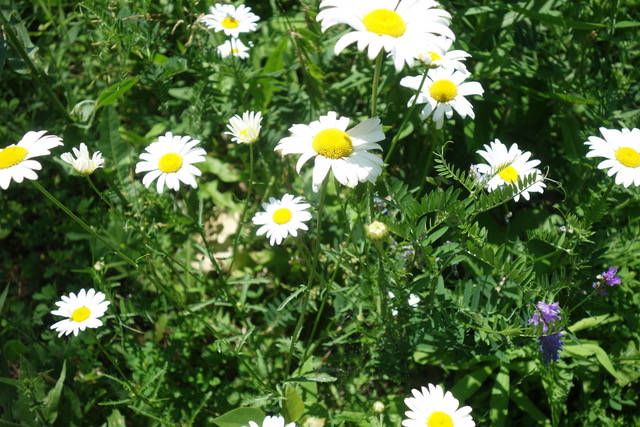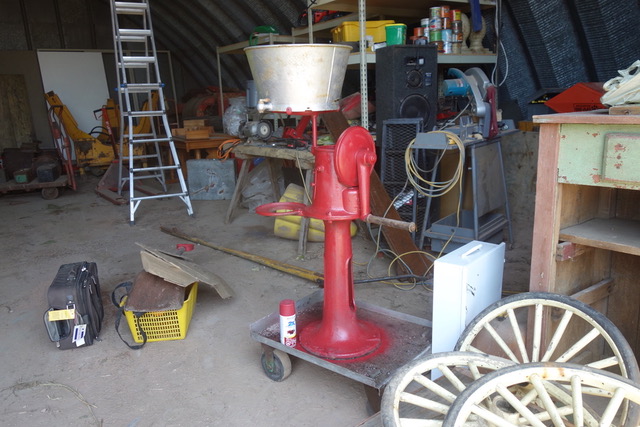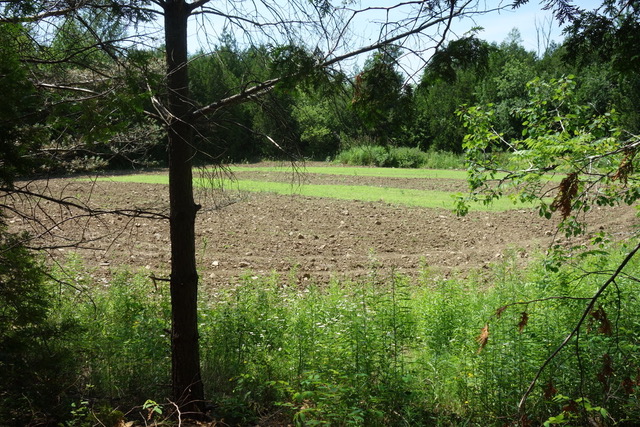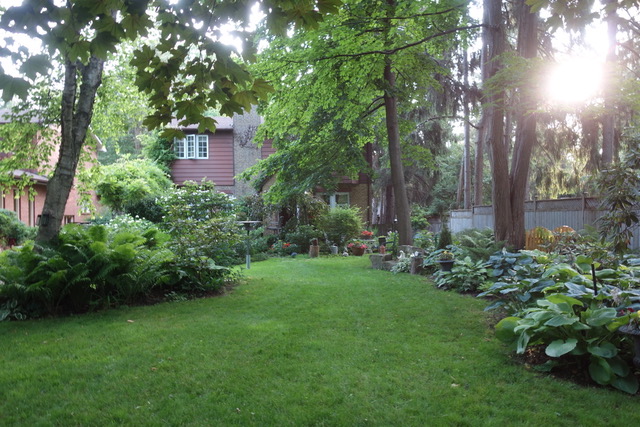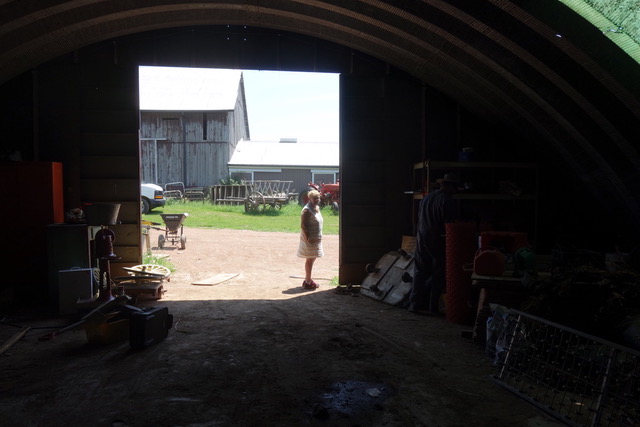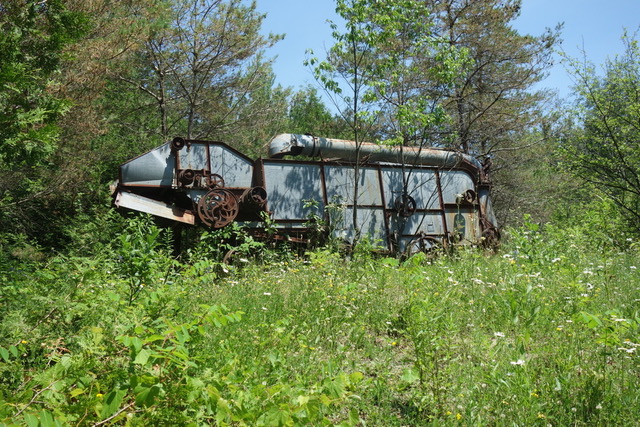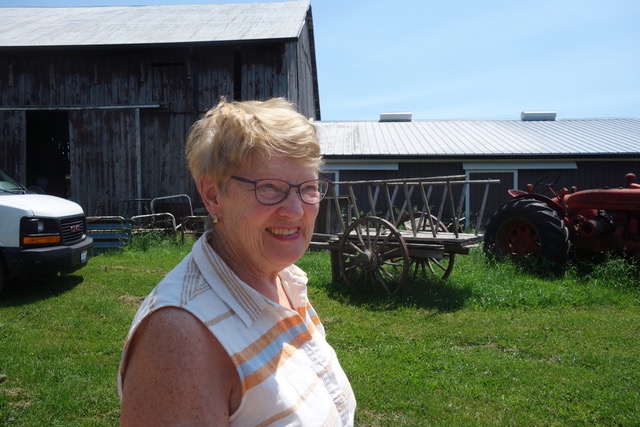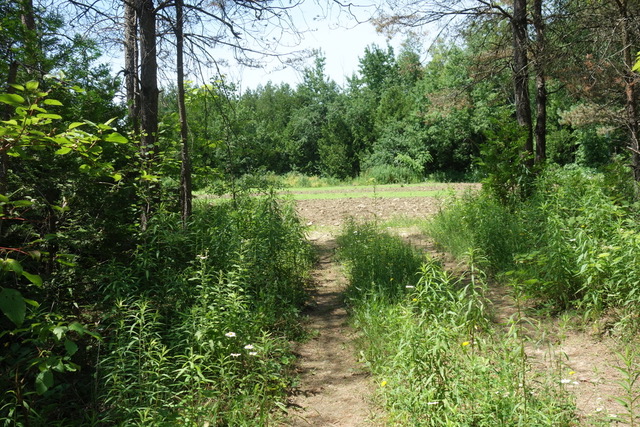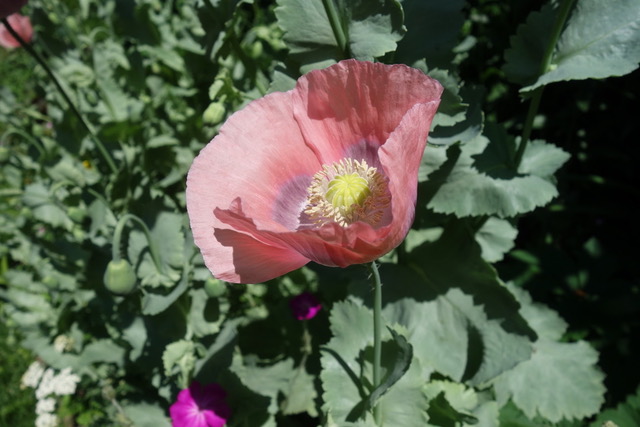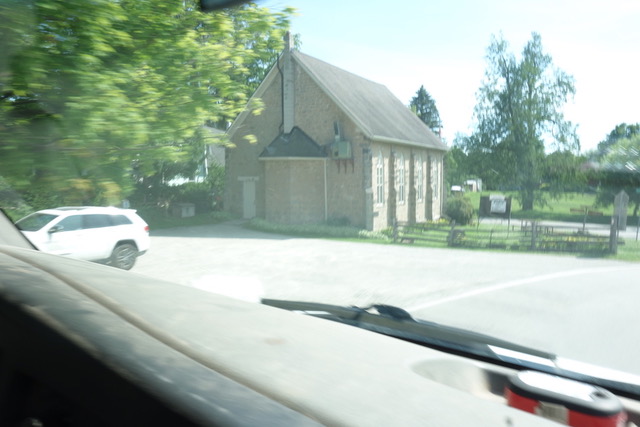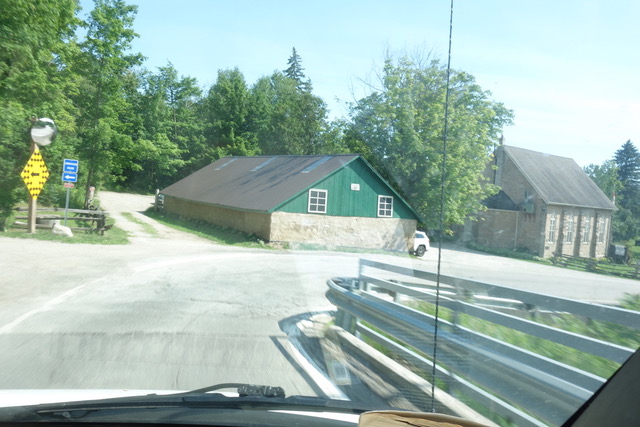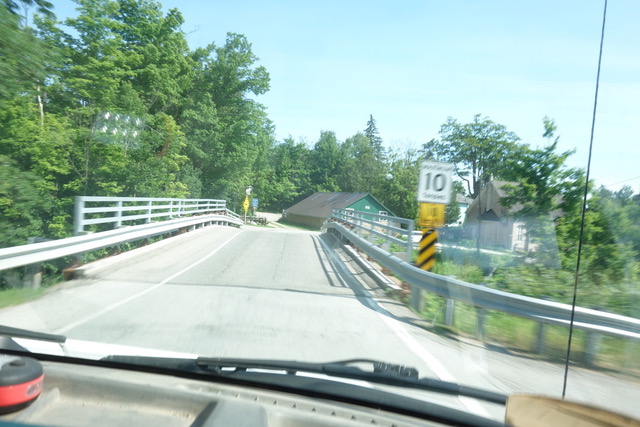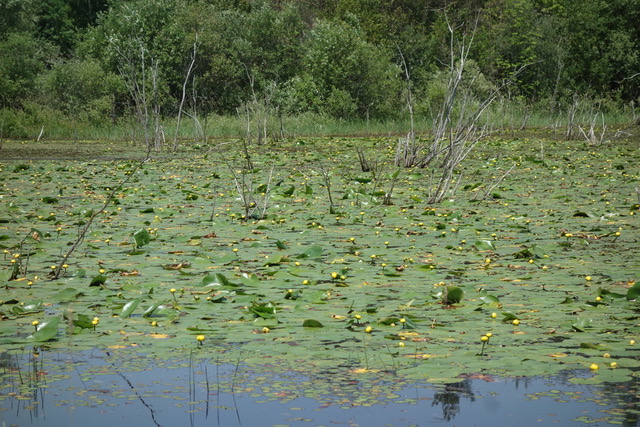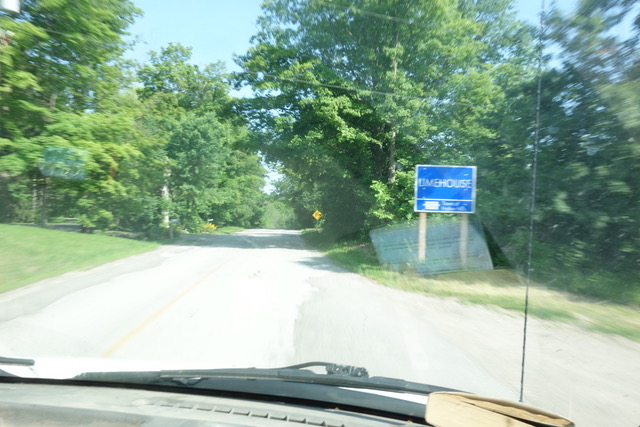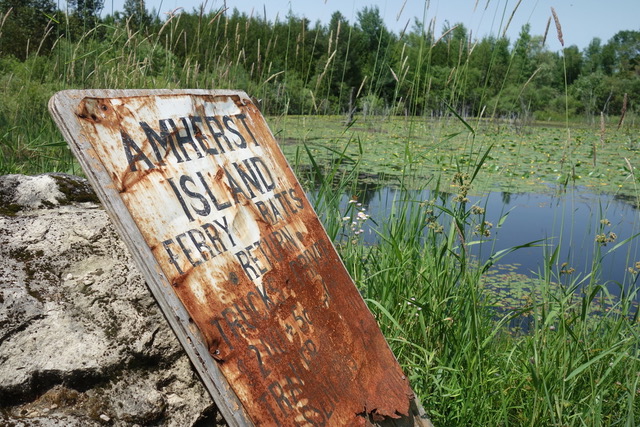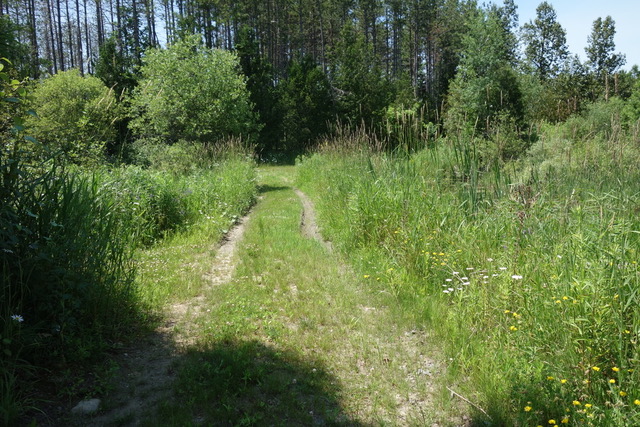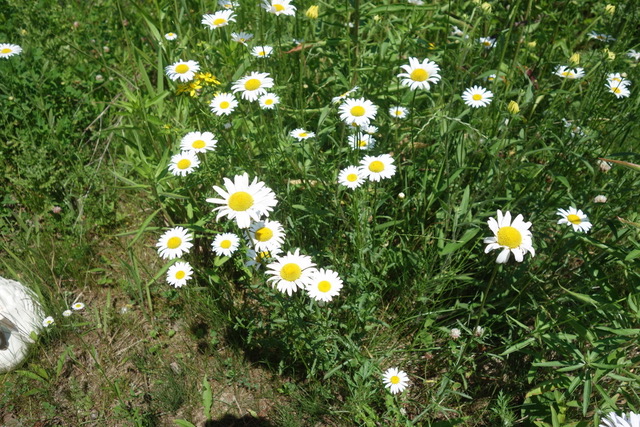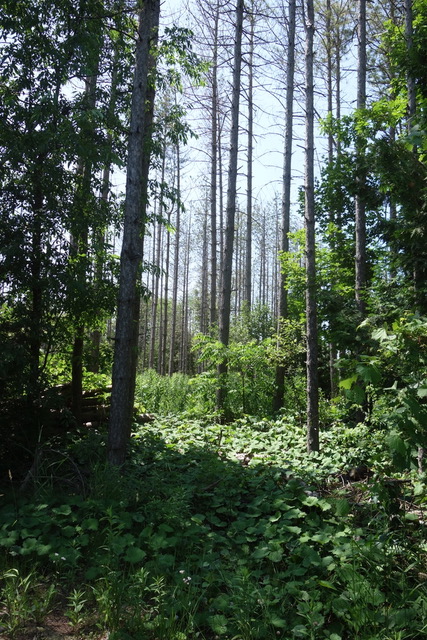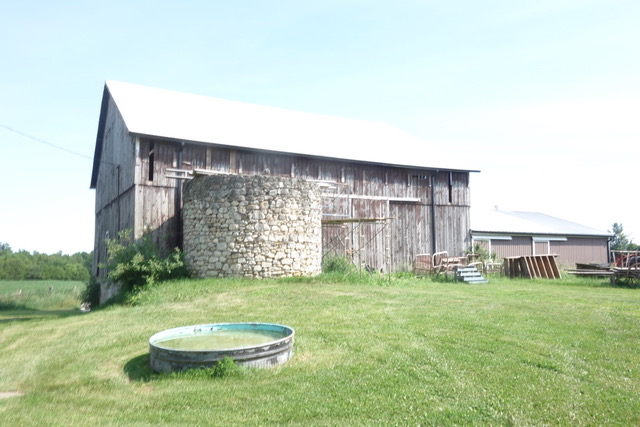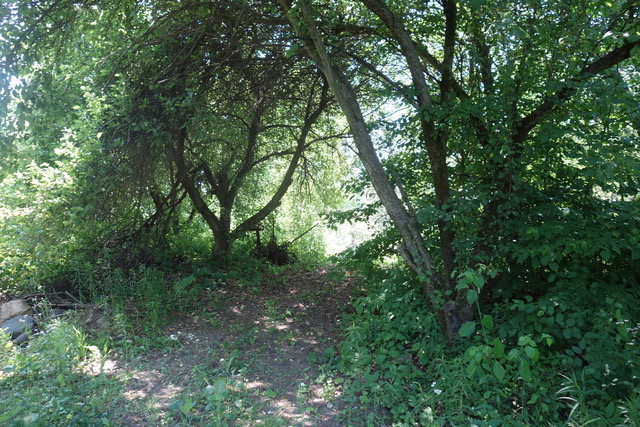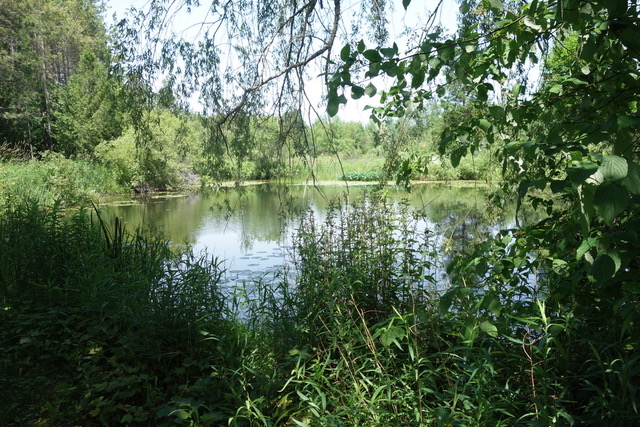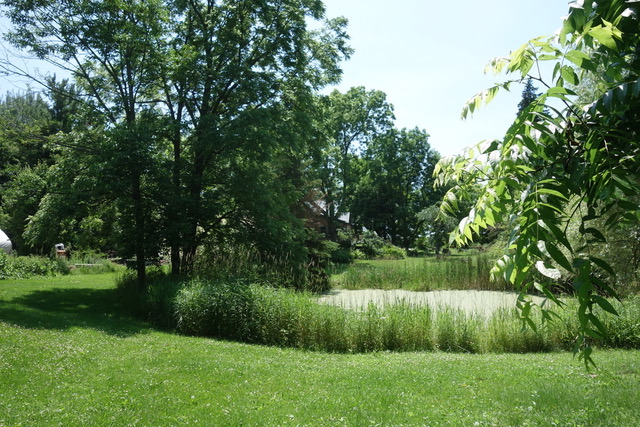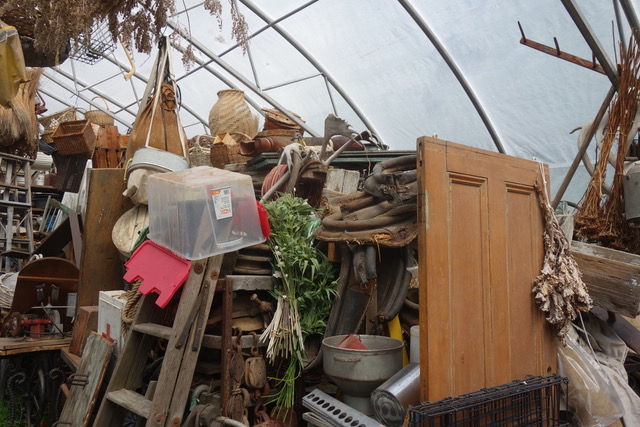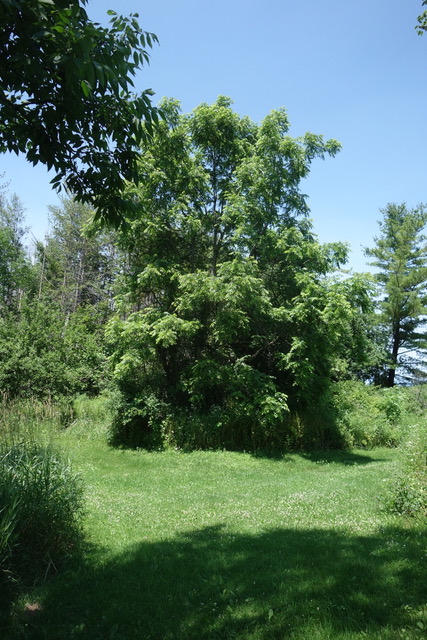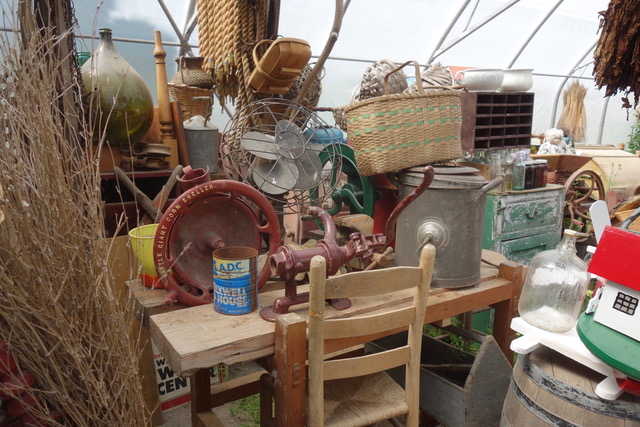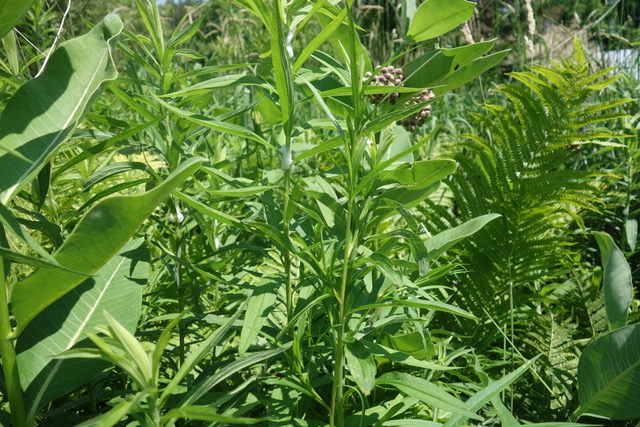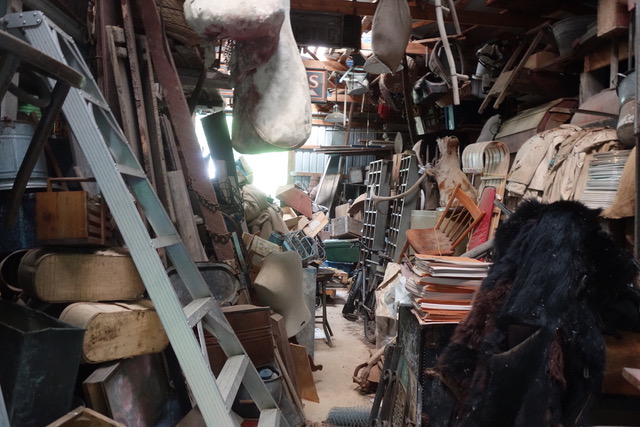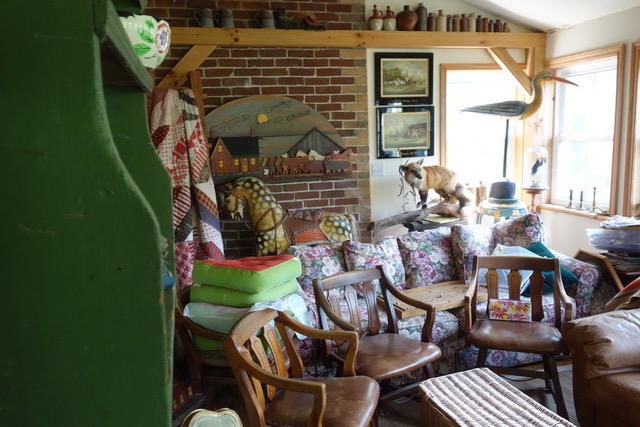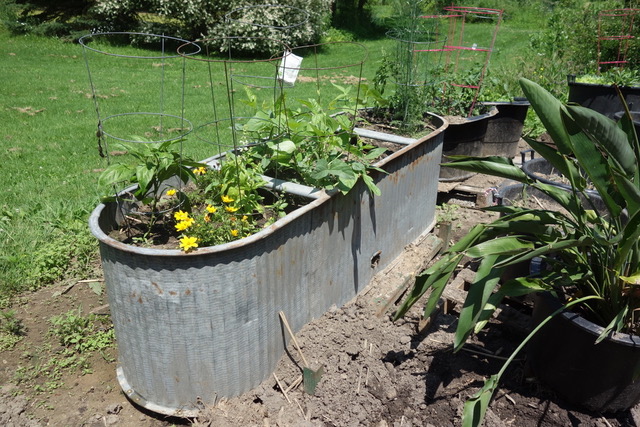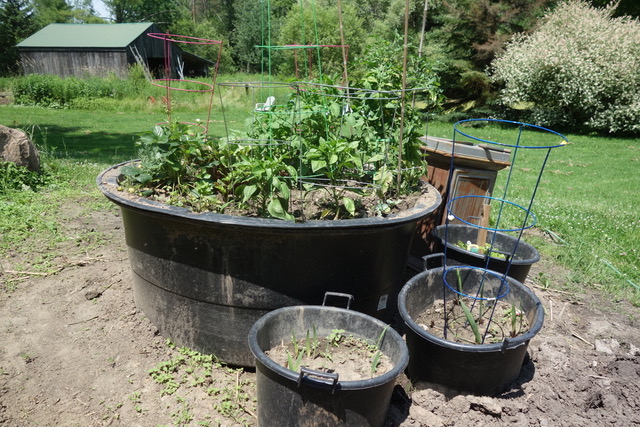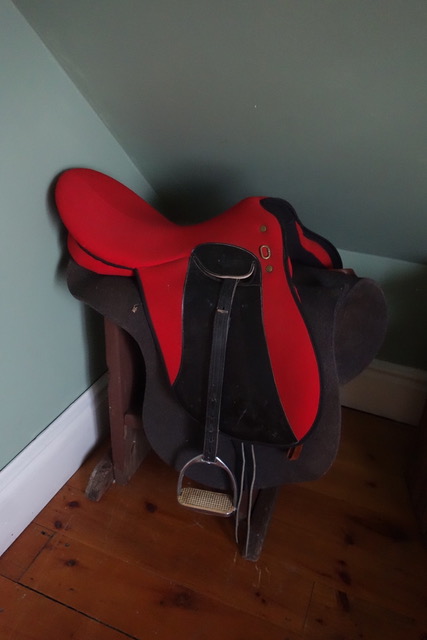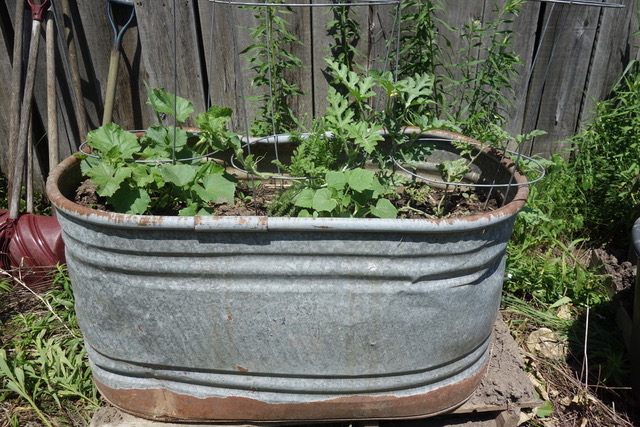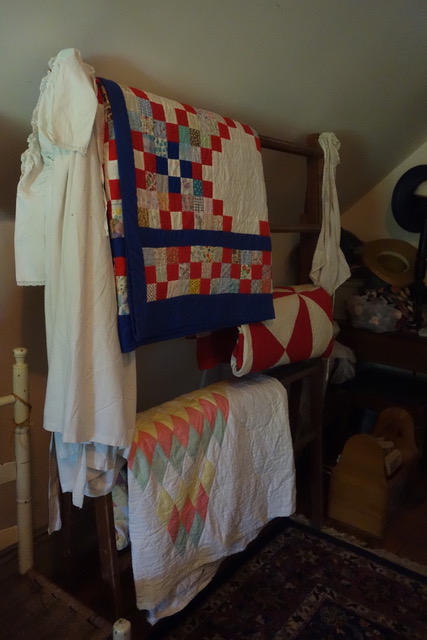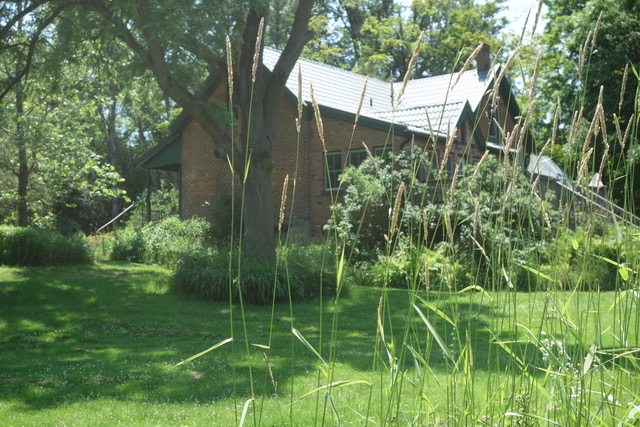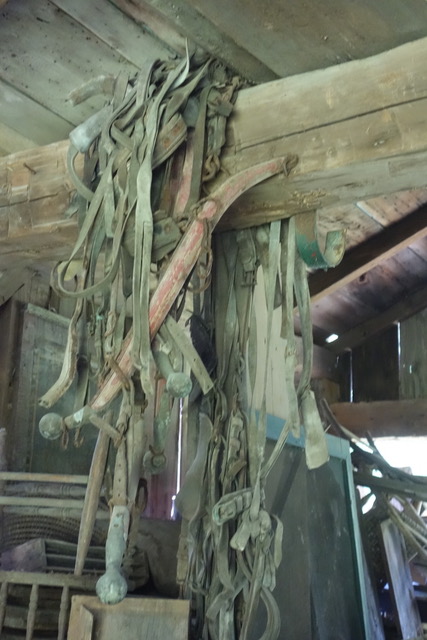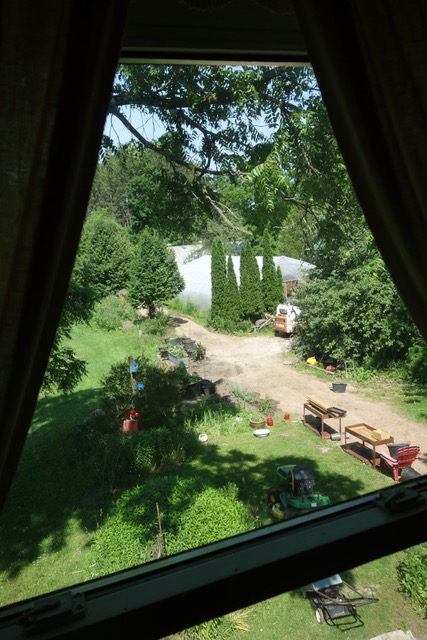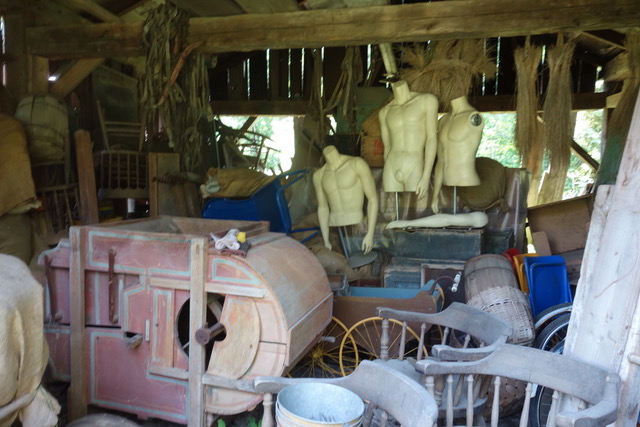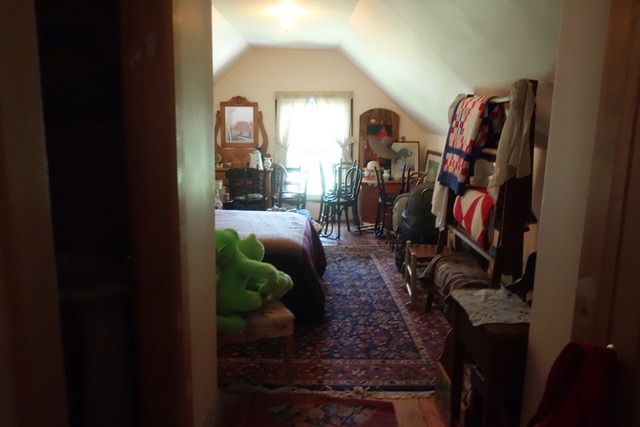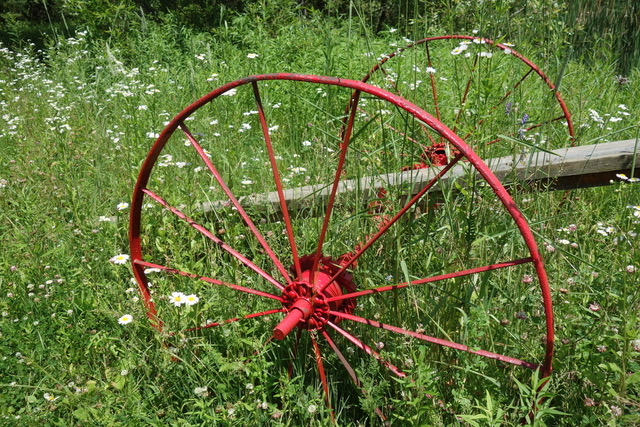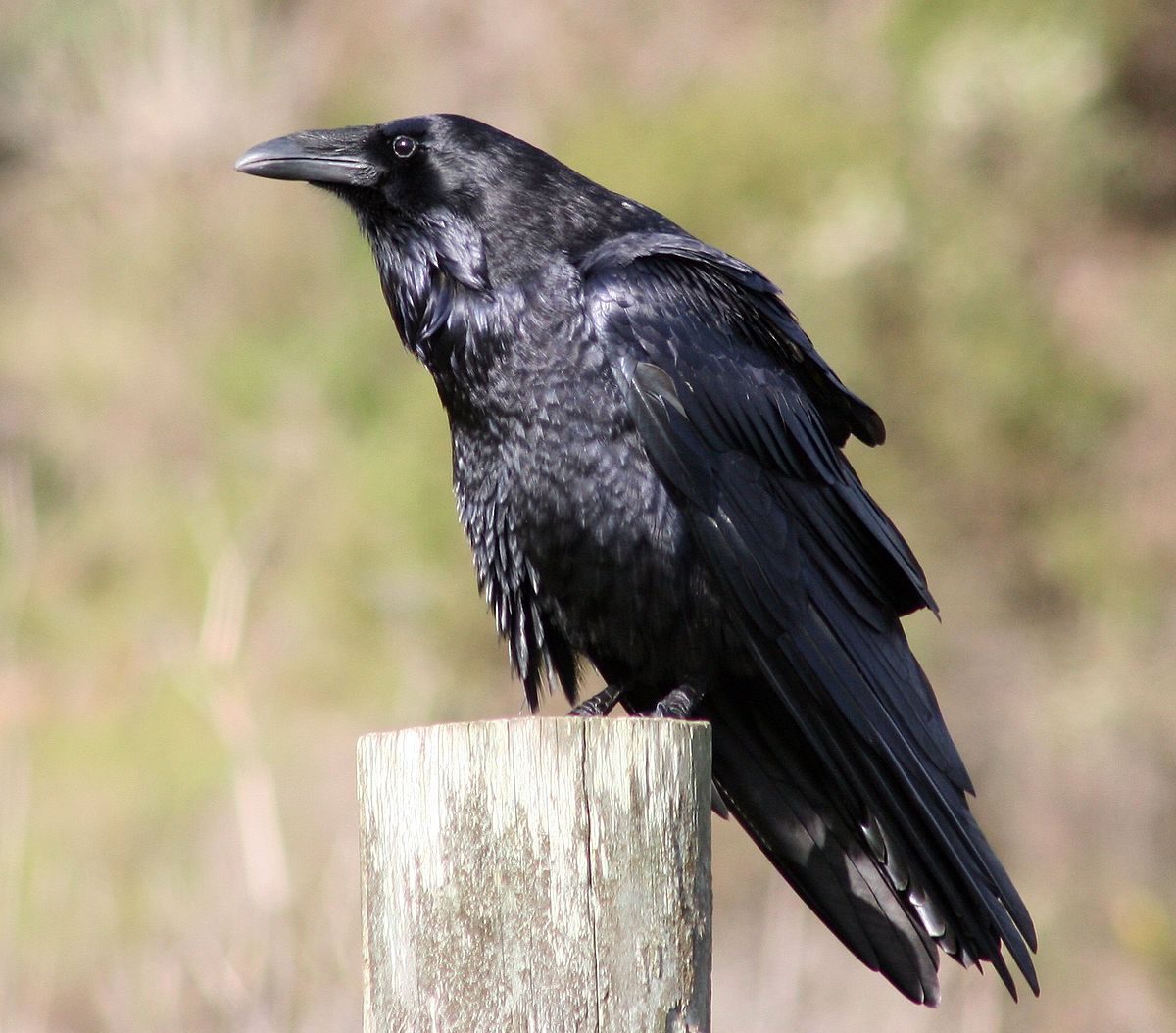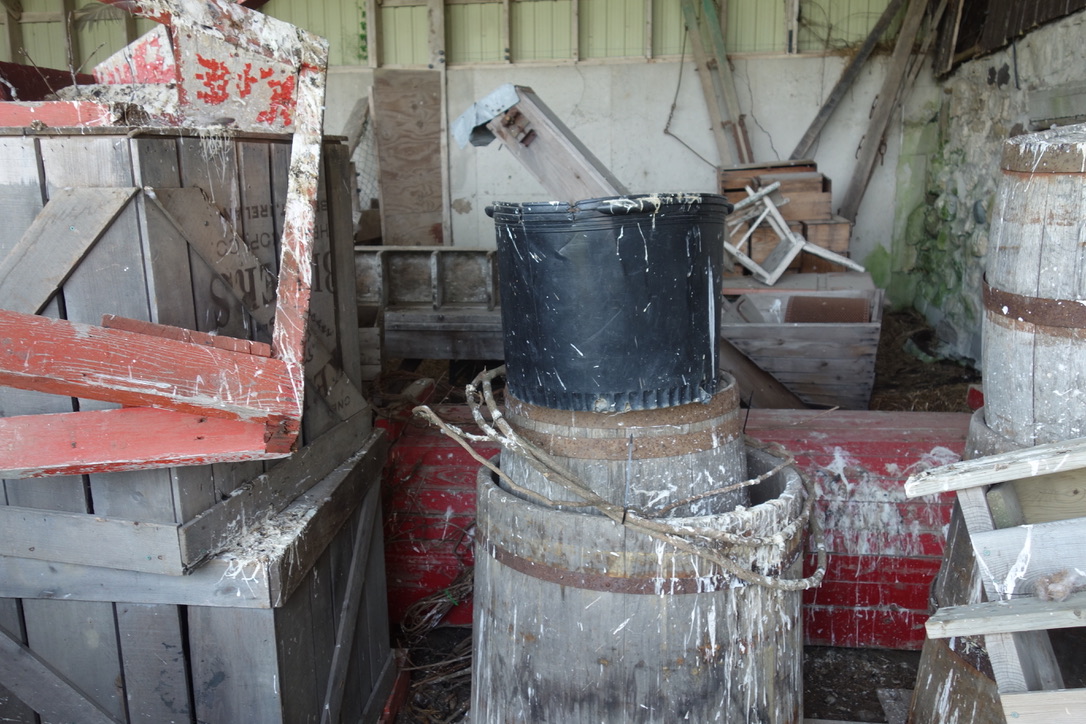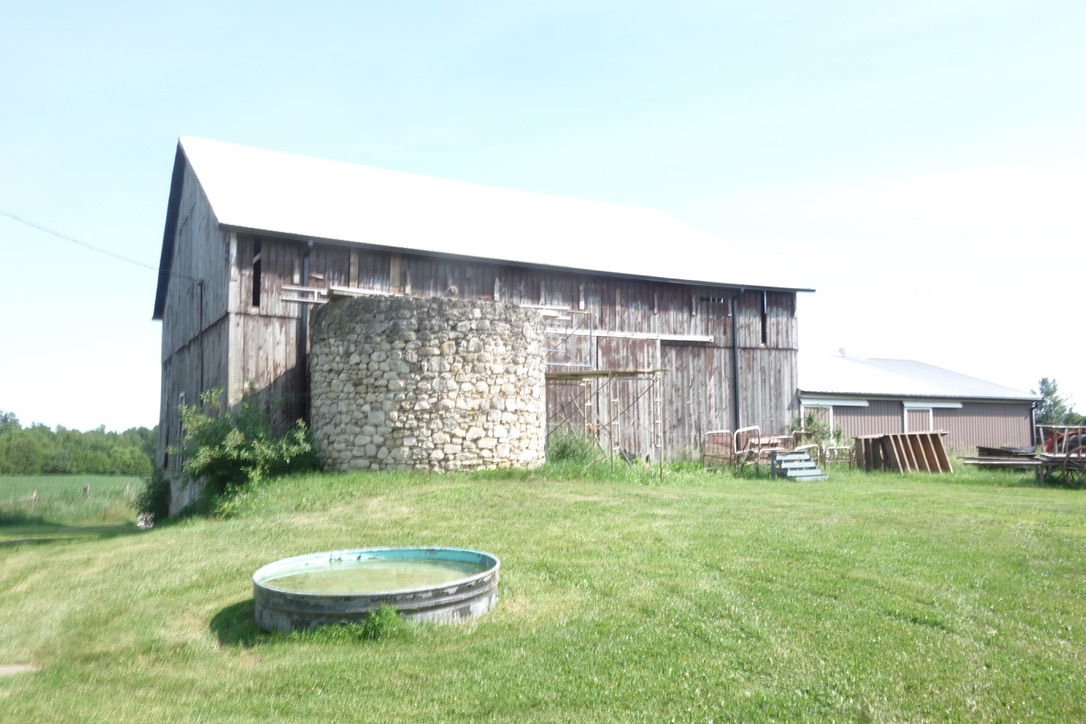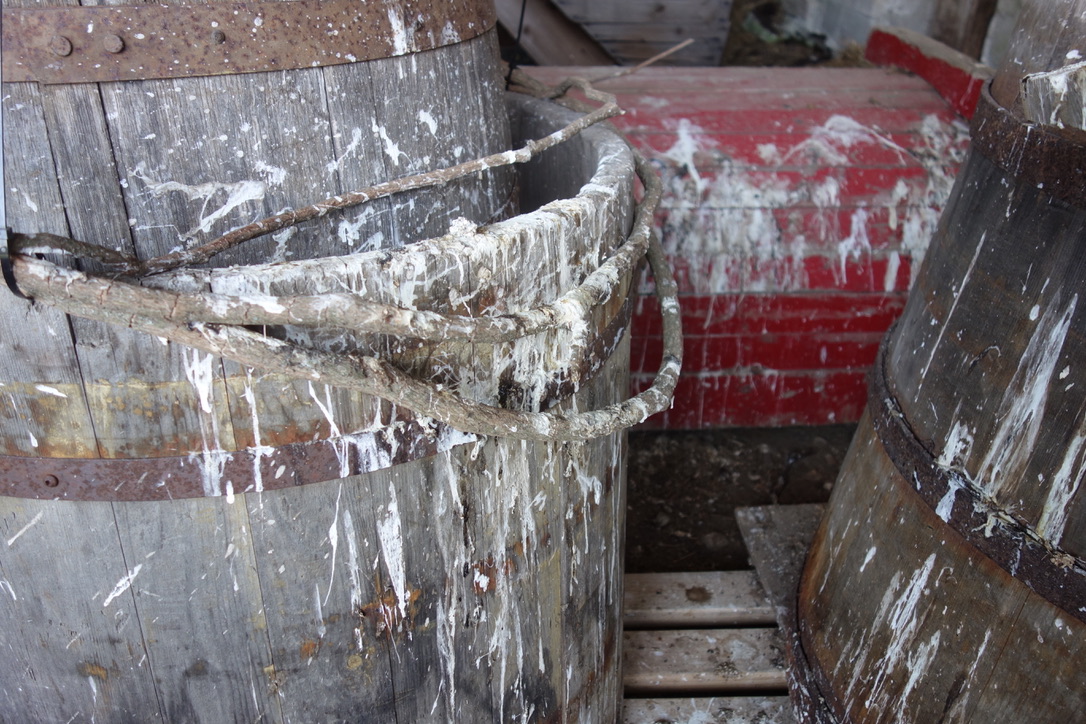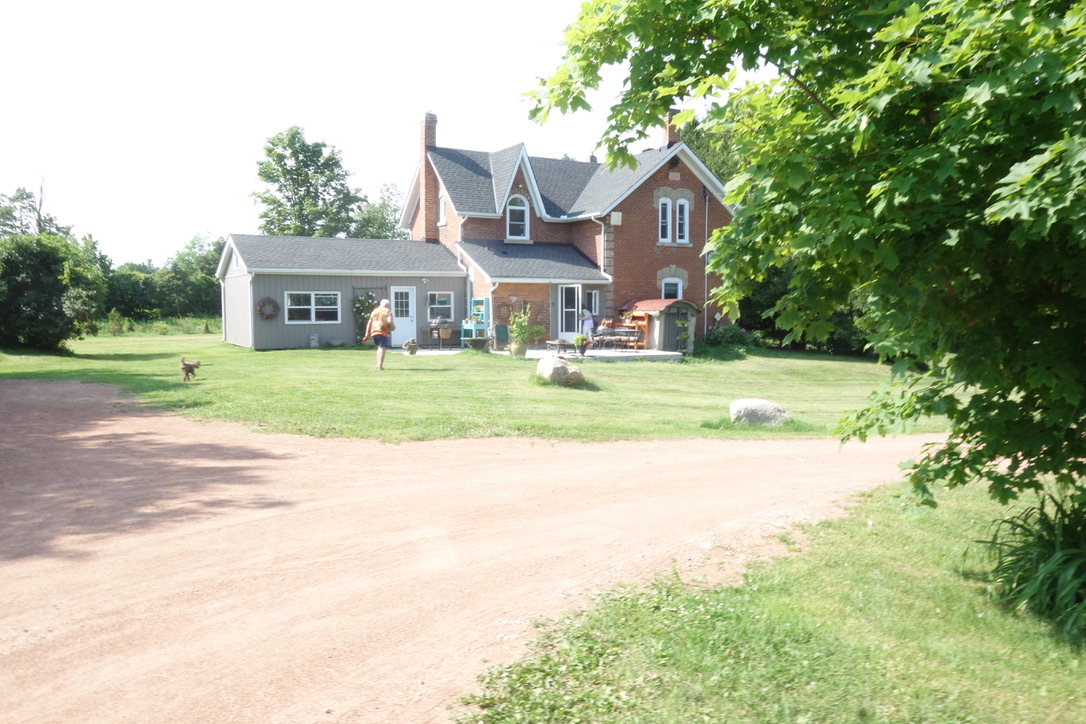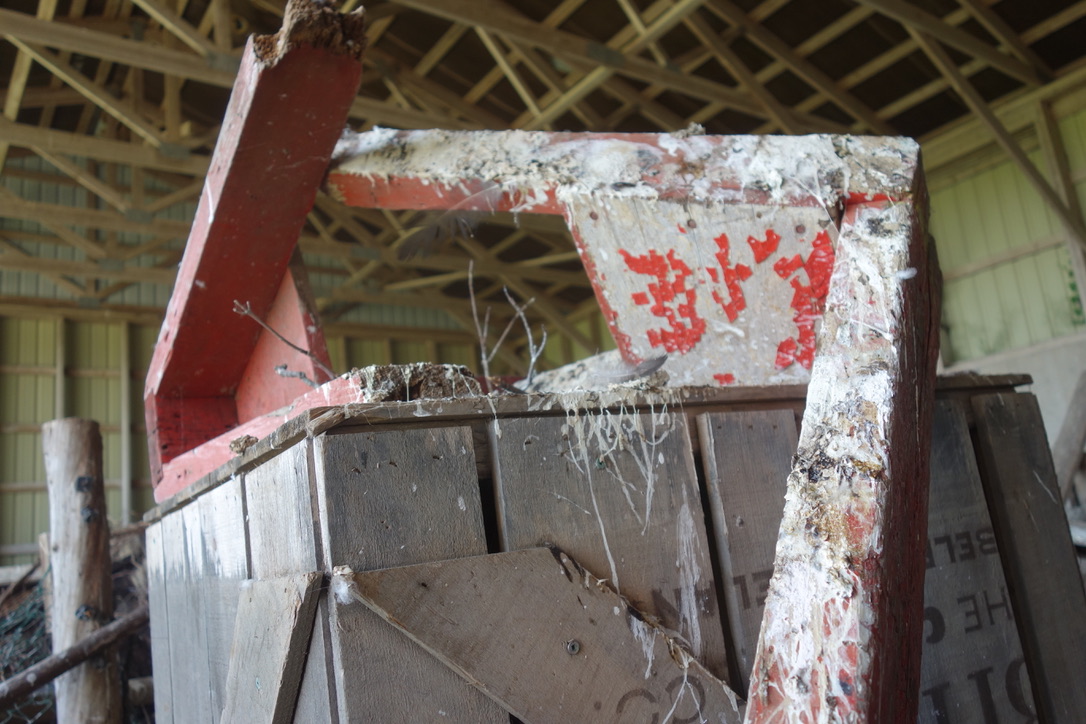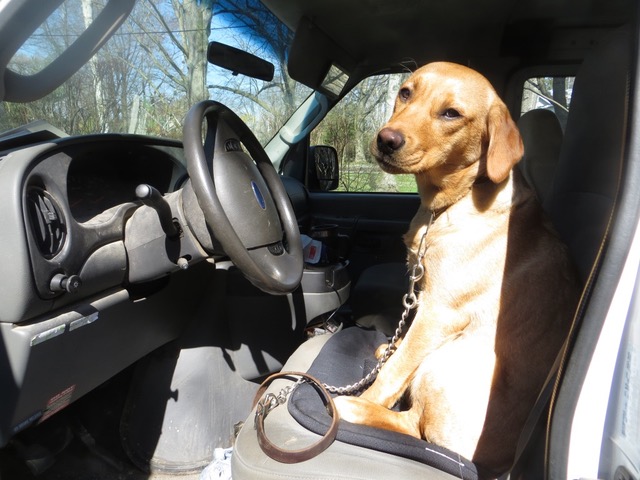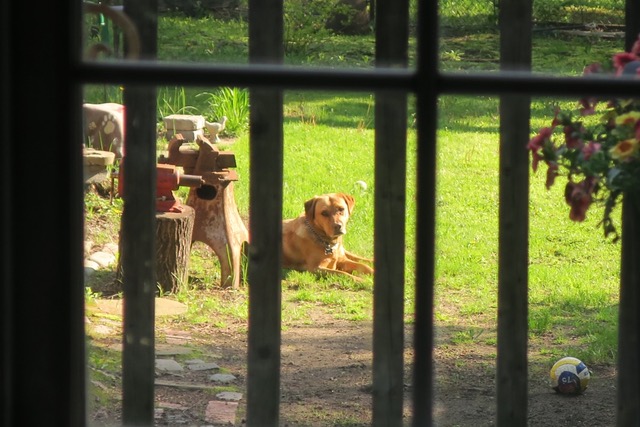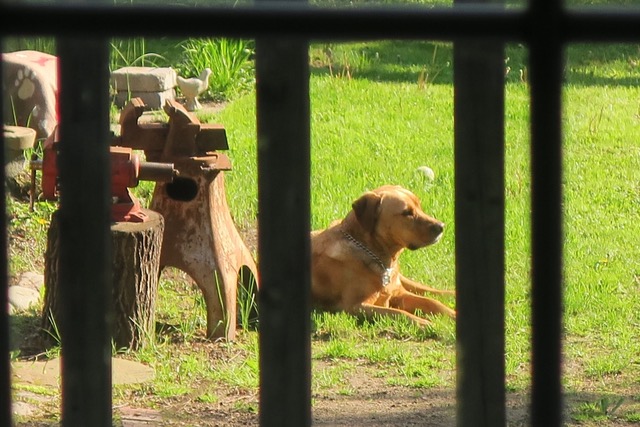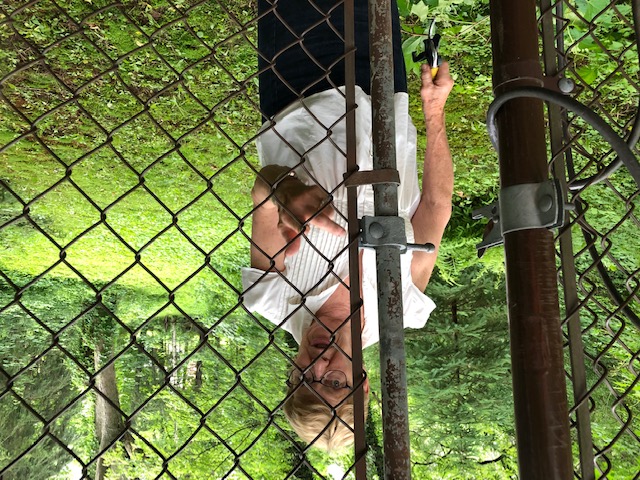THE AIR RAID SHELTER CAPER…
MEMORIES OF FEARalan skeoch
august 2019This Victorian desk/bookcase/vanity mirror brings back the fear I felt in 1954 when atom bombladen B52 bombers overflew Toronto each day high up in the stratosphere. Their vapour trailswere chilling.More chilling was my sure and curtain belief that a nuclear war was very possible and thatToronto could be a target of Soviet Union missiles. Or Toronto could be hit by accident of anAmerican B52 crash. I drew a circle with my compass. One point on our city hall and theother pencils point tracing a circle. We were just outside the circle of mass destruction. Survivalwas possible. With care. American atom bomb tests had been moved to Bikini Atoll, depopulatedislands in the south central Pacific Ocean. The population of 167 had been moved. They would never
return as test after test of atomic weapons were conducted.
BUT I figured we might survive an atom bombexplosion…just barely do so if precautions were taken.THE VICTORIAN DESK BOOKCASE
This cabinet was the heart of our basement air raid shelter. It had to be stocked so I began slippingcans of tomato soup, pork and beans and canned peaches down the back stairs to the cabinet.Never gave any thought to how the soup could be cooked. Pork and beans and peaches could beeaten cold. What else was needed? A big bag of Quaker rolled oats tucked away in a tin with a lid lestthe mice erode our food supply. Rolled oats do not need to be cooked and are considered nutritious.
Alcohol? A year of so later I stuffed a full bottle of Hennessey’s cognac in the ceiling gapbetween heating pipes and floor joists. Water? That was easy. “Mom, in the event of nuclear war, couldyou rush down and fill the cement laundry tups with water?” “What if I am working?” ?/ Right, anyone homemust fill the laundry tubs before the detonation.?
What else should I put in the old desk? Books, perhaps a Steinbeck or
Dickens or Cowboy Western by Luke Short. A bible? Might get aroundto reading it to allay fear or increase it? Toothpaste. The thought oftoothpaste raised another distasteful thought. Toilet paper. But wherewould we relieve ourselves? I had no answer except the tenant’sdownstairs toilet on the other side of the wood panelling between myair raid shelter and their bathroom.Thoughts of Mr and Mrs Douglas, our tenants at 455 Annette Street,Toronto west end. raised the thorny question of who would be let intoour raid shelter and who would be left to die of nuclear burns. Sheltershad to be kept secret. A terrible fact. Our shelter would only haveroom for brother Eric, mom and dad. Four people. And, oh yes,our cat Tinker. She would not be a problem and she was family.All others would be kept out which meant the hook latch on the backdoor would have to be reinforced somehow. Thoughts of friends likeBig Red Stevenson, Russ Vanstone, Good Sanford or Kaye Donovon yelling for entrancewas unsettling. Sadly my girlfriend was on the eastern side of thecircle of death. She would not survive. The relationship was tenuousat times anyway.We would need to keep a record. Maybe have to live for two or three
weeks in the air raid shelter. So the desk side was stocked with pens, pencilsand green spiral bond notebooks. Who knows, maybe a great novel will
result providing we all survive.Survival? The shelter was between the old cement block coal bin andthe huge furnace. Some protection on the north particularly since the coal binwas double walled. The western wall had no windows… solid cement blocks.
It was on the east side I had a problem. Two cellarwindows…flimsy. If the shock wave hit them they would shatter and renderthe shelter useless. I decided to ignore the window on the other side of thefurnace and proceeded to consider bricking up the other window. Mom and daddid not approve so instead I covered the window with short pine planks and kepta small supply of bricks ready if needed.The silliest part of this shelter was the sleeping arrangement. One old motheaten studio couch was all I could find. We would have to take turns to sleep.Three chairs and the couch … and the Victorian desk that had been convertedinto a larder of sorts. Enough food for two or three days at best.Funny thing about the shelter was the floor. For some stupid reason I beganconstruction by laying down a wooden pine floor. Made no sense really and reducedour headroom by a few inches. But it made the shelter look rather homey.THEN, in 1956, a Hydrogen bomb was detonated on Bikini Atoll. A hydrogen
bomb was 1,100 times more powerful than the two atomic bombs droppedon Hiroshima and Nagasaki. ELEVEN HUNDRED TIMES! That informationchanged everything. The new circle of total devastation went way beyond our housein West Toronto…way beyond Etobicoke…beyond Malton airport.There was no point in my air raid shelter. Like thinking people around the worldI began to imagine a world without people. One secret report from the scientiststesting nuclear weapons on Bikini Atoll was that the human race was about tobe depopulated. Of humans only a ‘vestigial’ fragment would survive and for themlife on earth would be unimaginably horrific.So the Skeoch air raid shelter just mouldered away. Raids on the food suppliesoccurred. “Alan, go down and get two cans of tomato soup from your air raidshelter.” “Any rolled oats left down there?” Finally all that remained was the bookcasedesk lathered with a dash of coal dust.About a decade later I remembered something really important. That bottleof Hennessy’s Cognac beside the stovepipe. Eric and I rushed down and sureenough, there it was. Dusty like fine century old wine. But intact. We had nevertasted cognac and twisted the top open. Poured a bit of the nut brown liquid intotwo glasses and then….YUCK! This was not cognac. It was water with colouring.Dad had found the bottle long ago. It must have given him a bit of pleasure ashe shovelled chunks of anthracite coal into he furnace. And he must havegrinned to himself thinking that someday his sons would remember the bottle.And would they be surprised.We found it. But we were not surprised. Nothing our dad ever did surprised us.Eric and I were the luckiest of children. Poor but we did not know it. Treasuredbut we did not know it. Being taught but we did not know it. Loved but we tookif for granted.“What kind of Tom foolery are you up to now?”“Building an air raid shelter for all of us, Dad.”“Now, if that is not the stupidest goddamn notion you have ever had, I’llbe a monkey’s uncle.”“You could help get this bookcase desk into the cellar..”“Where in hell’s half acre did you get the goddmaned thing?”“Salvation Army store…delivered.”“You payed good money for this thing?”“Twenty dollars.”“Another proof of your stupidity.”But he helped lay the floor and get the old couch past the octopuswe called our furnace. Neither Eric, Mom or I ever occupied the air raidshelter. But Dad did. Shovelling coal beside the couch in winter. Thenreading the racing form from front to back and back again. In summer thecoolness of the cellar was as good a launch pad for Woodbine, Fort Erie, or
even Batavia Downs…as good as he could find. Racing forms
were great literature to him. Who did he love more than mom and his boys?Northern Dancer comes to mind…a great Canadian horse. Dad did not spendtime…waste time…thinking about the possibility of nuclear war. He was a manof the moment. A horseman. If nuclear war was about to depopulate the planetthen Dad just did not want to be around such a stark landscape that had no horses.Then why did he help the construction? I think he saw me slip the bottle ofHennesy’s into the the slot in the joists. Just saying this creates a falseimpression. Dad was not a drinker in the sense of becoming an alcoholic.He drank beer with friends and particularly his argumentative brothers…Art,Jack, Archie and Norman. And Uncle Earnest who was really a cousin.
He also had a beer or two with his racetrackcronies of which there were legions it seemed. He was a social animalrather than a solitary boozer. I bet he shared that cognac with old Mr. Cookon the corner house. I bet they both laughed a lot.Fear of a depopulated world was not part of their lives. I envy them now.Nothing was to be taken too seriously. As mentioned far too often inthese stories is Dad’s comment which he repeated with glee. “We have twosons, one is a gutsy bugger and the other is as stupid as Joes dog.”As an adult I rather liked to be known as a gutsy bugger but Now,in retrospect I think Dad thought I was as stupid as Joe’s dog.Building an air raid shelter when the world was about to be destroyed.Now that is stupidity.The Hydrogen bomb ended the illusion of survivability anyhow.
BIKINI ATOLL
Nearly 100 ships were anchored around Bikini Atoll in 1946 as American Nuclear test
BIKINI ATTOL…GHOST SHIPS OF WORLD WAR II…CONTAMINATIONIn 1946 the United States had a huge supply of surplus ships including theships surrendered by the Japanese Navy. So one of the most startling atomic testwas planned by anchoring 78 of these ships at varying distances and angles to BikiniAtoll where a test atom bomb was detonated. Most were inside the Bikini Atoll lagoon.Five sank and 14 were severely damaged but, surprisingly the rest survived.The USS Independence was one of the test ships. She Survived and sailedback to port where she was stuffed with drums of radioactive waste and thensunk 30 miles off the coast of California where she rest spright to tis day.What followed was a series of 66 more test atomic explosions at Bikini. Aboveground testing of atomic weapons continued through the 1950’s until such testingwas stopped as a result of scientists like Canadian Ursual Franklin who rovedradioactive Strontium 90 was beng concentrated in children’s teeth. How? Verysimply. Atomic blast created clouds of radioactive dust that circled the globe. Eventuallythat dust settled on the ground. Cattle ate radioactive grass. And children drankradioactive milk. That fact led eventually to world wide ban on above groundnuclear testing.“Can we ever go home?” So asked the displaced islanders of Bikini Atoll. They were awardeda cash settlement of a two billio dollar land damage claim but payment seems to have stoppedwhen the initial fund was exhausted. In 1970 the islanders were allowed to return but thatdid not last long since any food they tried to grow was a radioactive danger to their health and theywere once again exiled, likely forever. “I do not believe its safe,” said islander Evelyn Ralph-Jeadrikeven tough her island atoll called Rongelap, was a distance from Bikini. “I don’t want to put mychildren at risk.”She was talking about the Bravo cnuliear test on March 1, 1954. A hydrogen bomb test that was“a thousand times more powerful than the atomic bomb dropped on Hiroshima.”Ir took a while for the implications of the 1956 Hydrogen bomb to be clear I’m my mind. I was buildingthe air raid shelter in the cellar based on the hypothetical circles of devastation expected from an atomicbomb. That was sometime in 1955. By 1956 even a person as stupid as me realized thatthere was no hope of survival. Humanity had to rely on the Strategic Air Command bombers toprovide some kind of mutual stalemate with the Soviet Unions Bomber command. No room forerror.So the Skeoch Air raid shelter was forgotten by all but Arnold ‘Red’ Skeoch as a place to fantasizeabout putting $20 on the nose of horses like Northern Dancer at the old Woodbine Racetrack whilehe rested on the air raid shelter couch sipping Hennessy Cognac.Events have a strange way of interconnecting. A few years later, in 1960,I was a young geophysical prospector sent to test survey instruments at the bottomof CanMet uranium mine. One of the Canadian mines that provided raw uraniumfor the manufacture of atomic bombs.The account of that adventure has beenattached in a separate email.alan skeoch
august 2019

